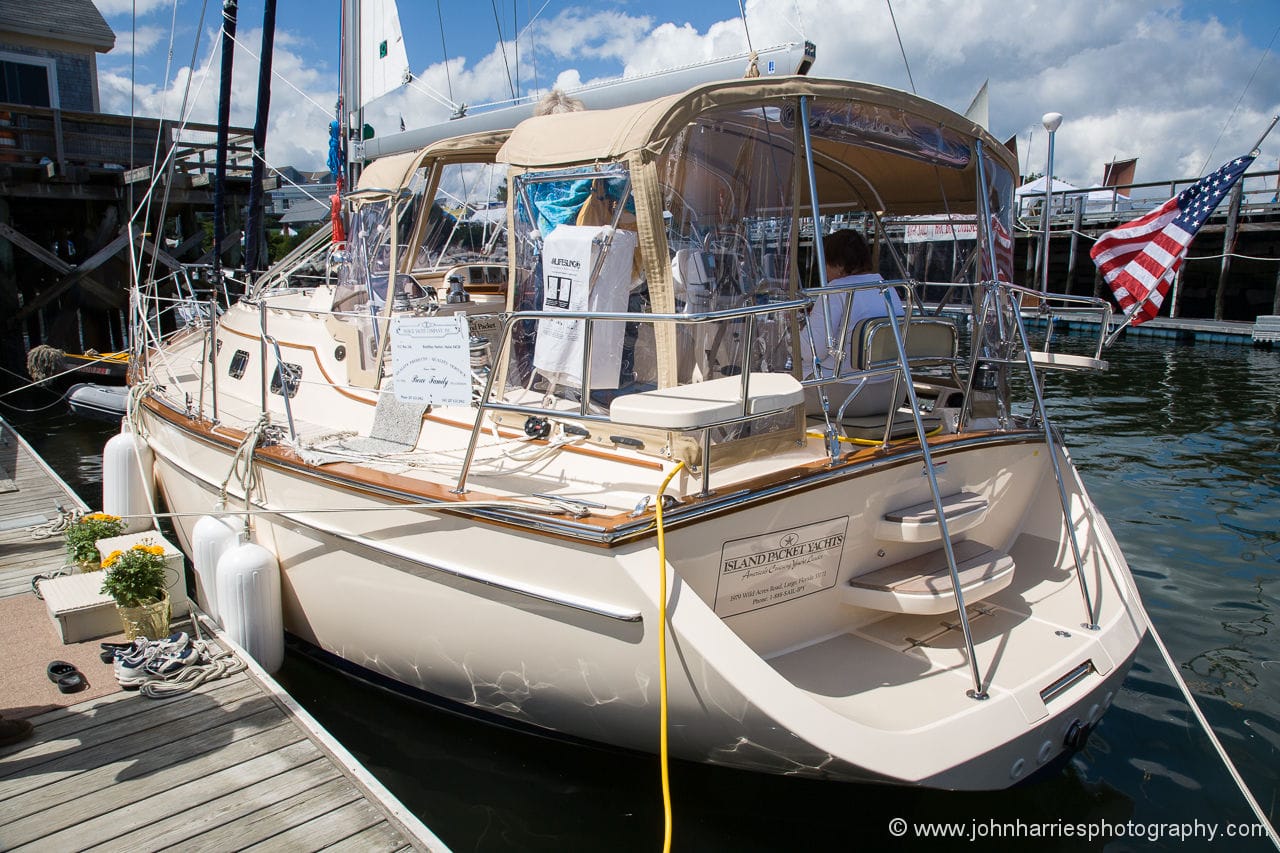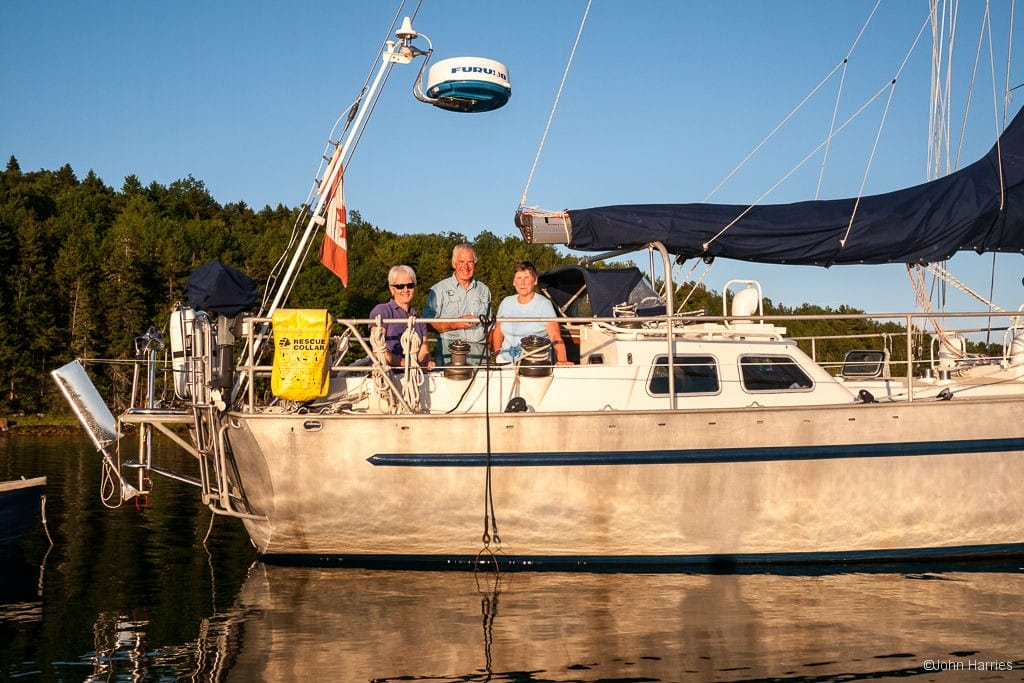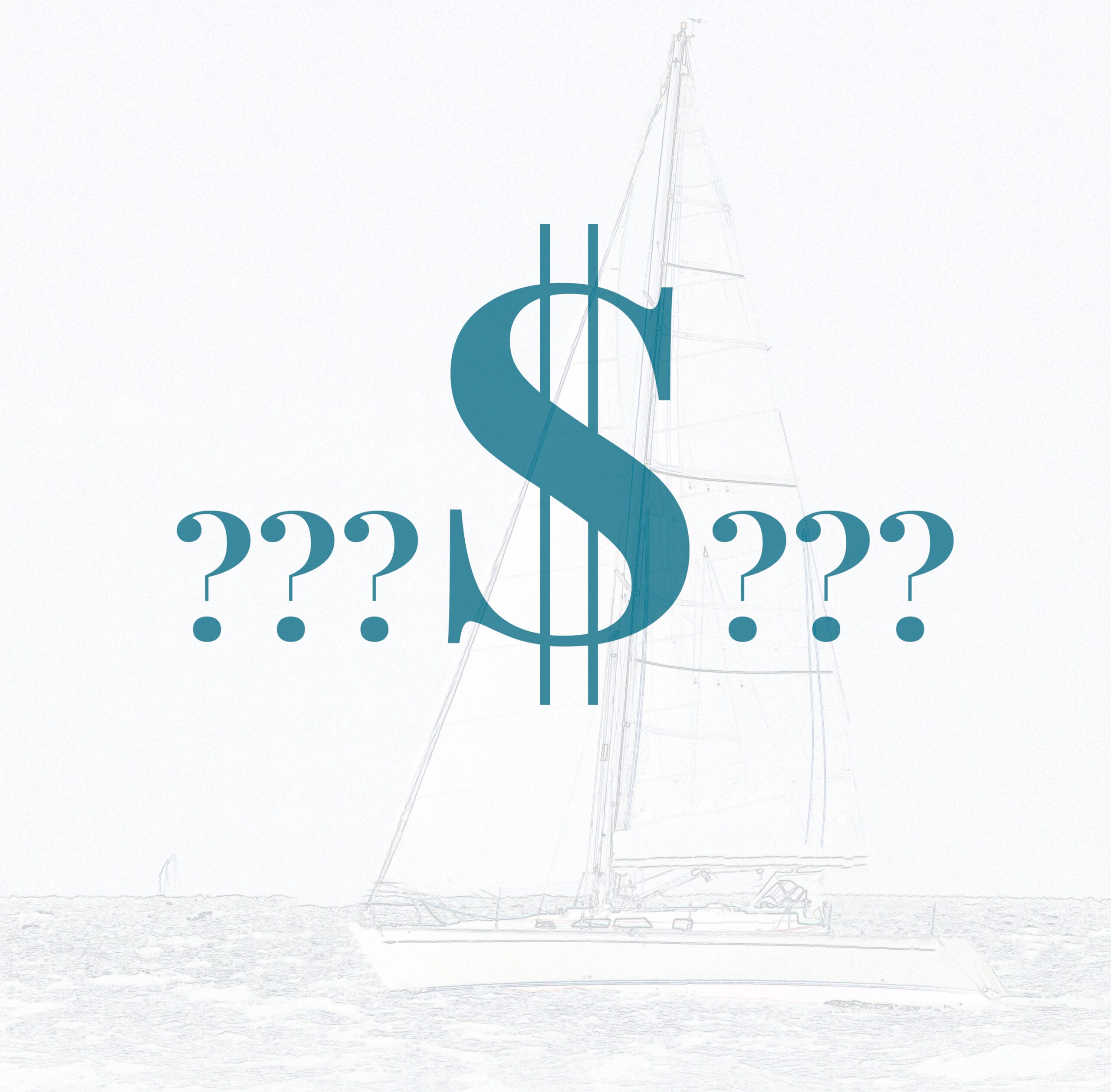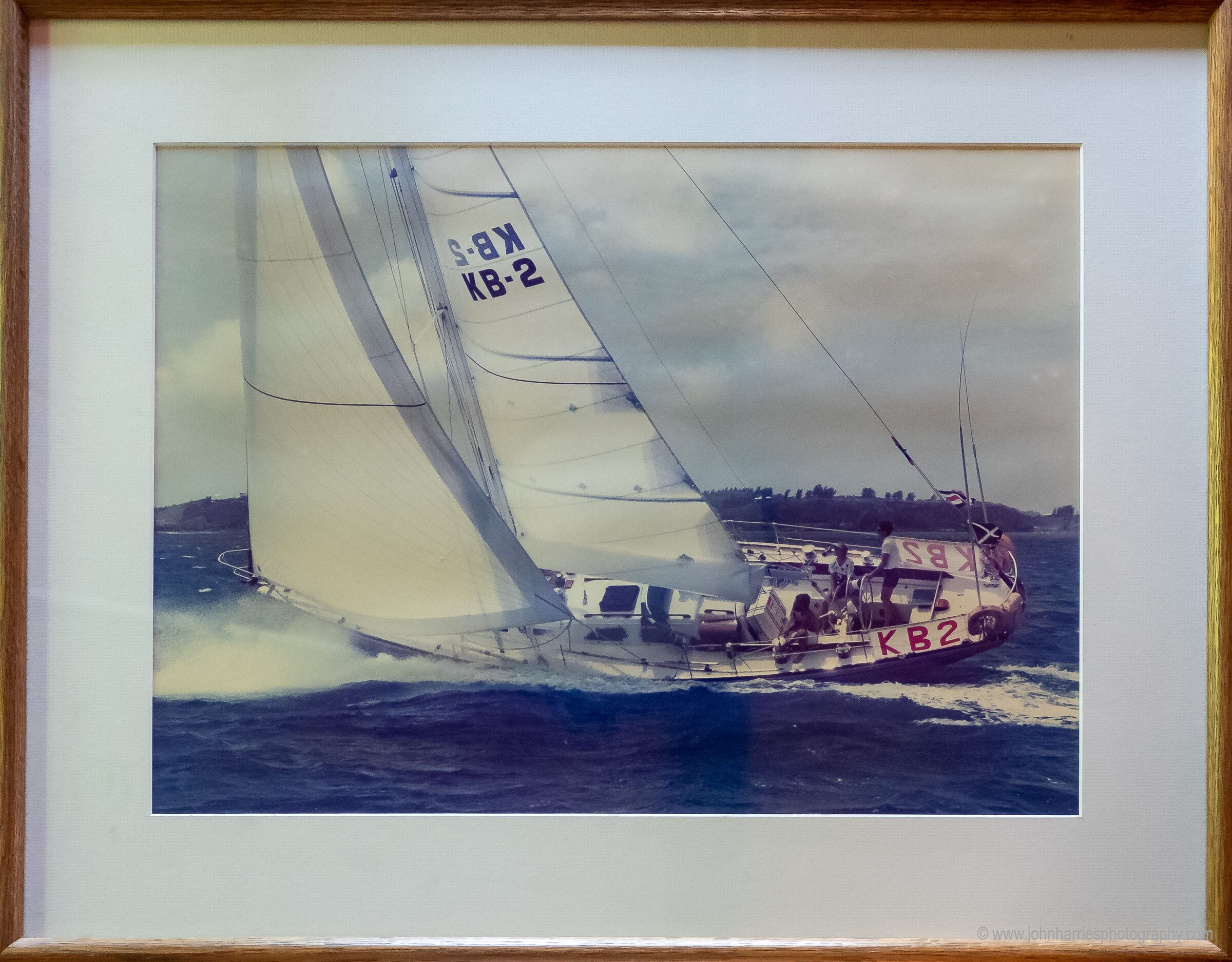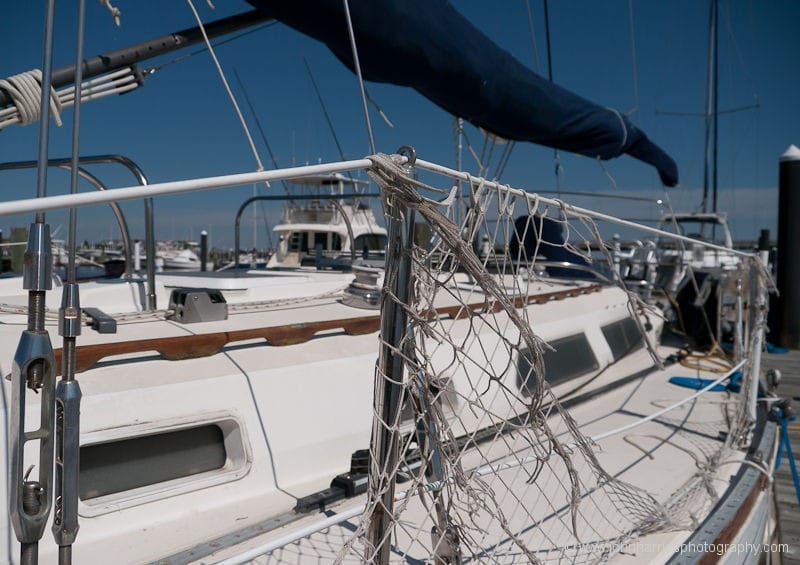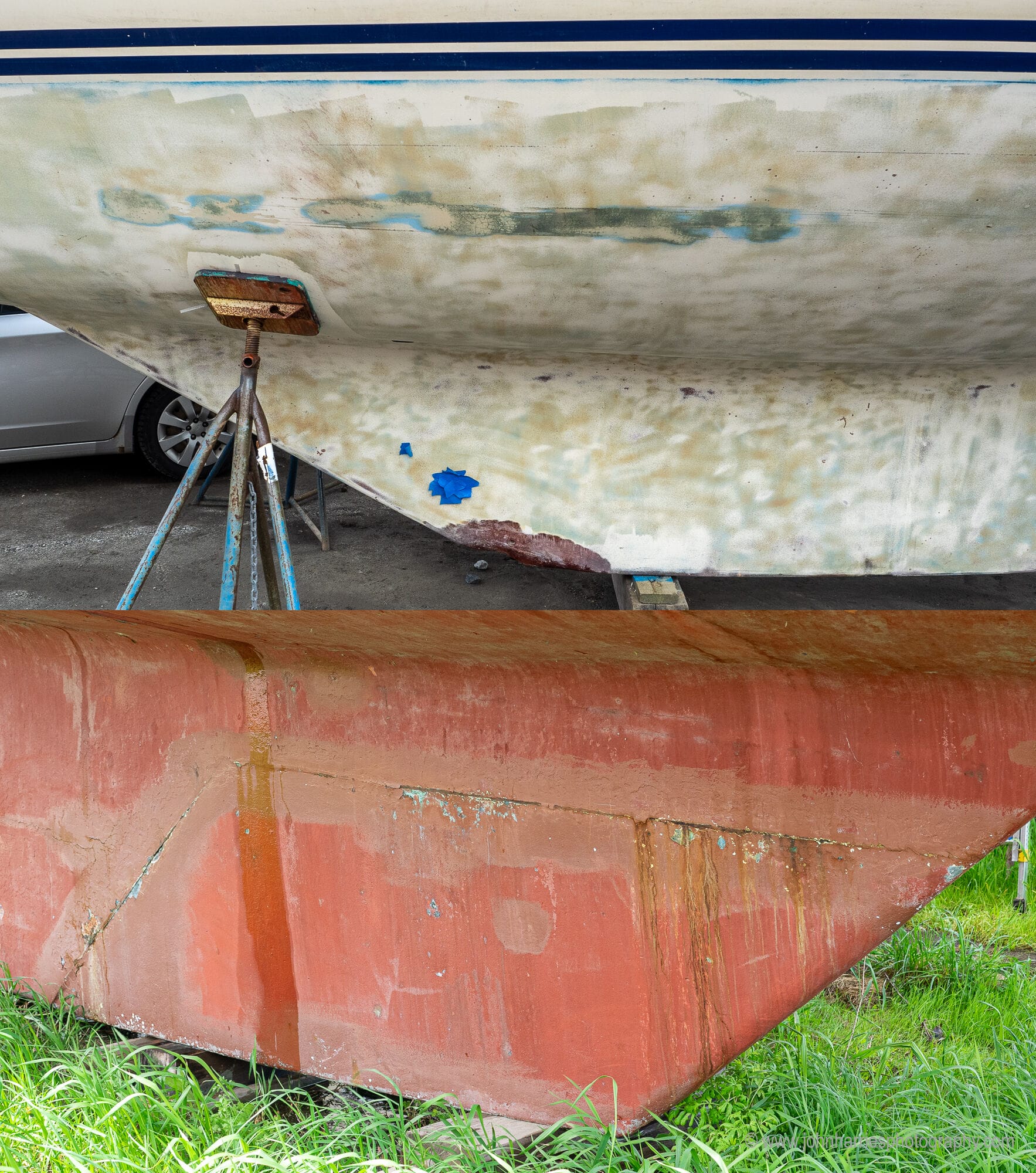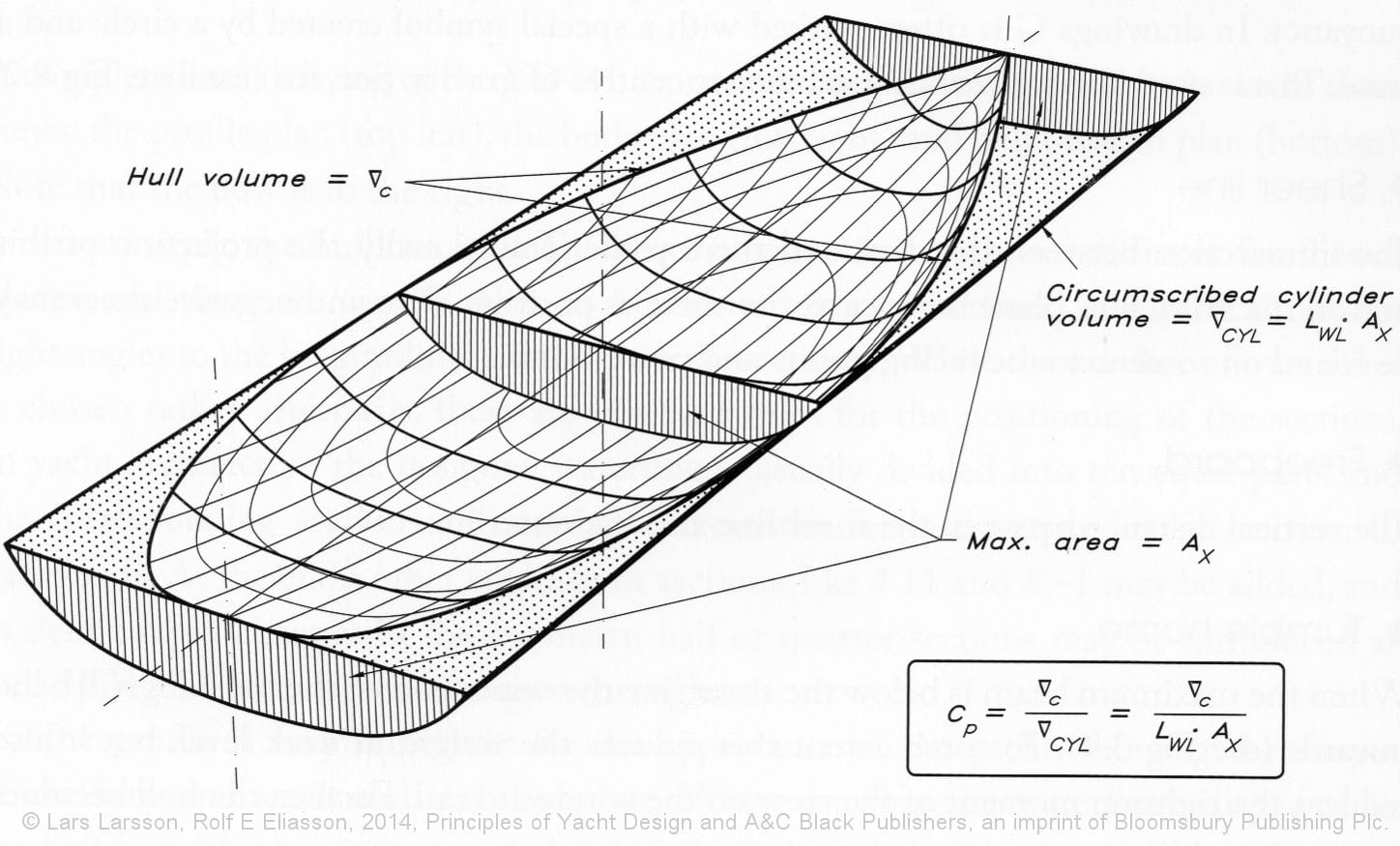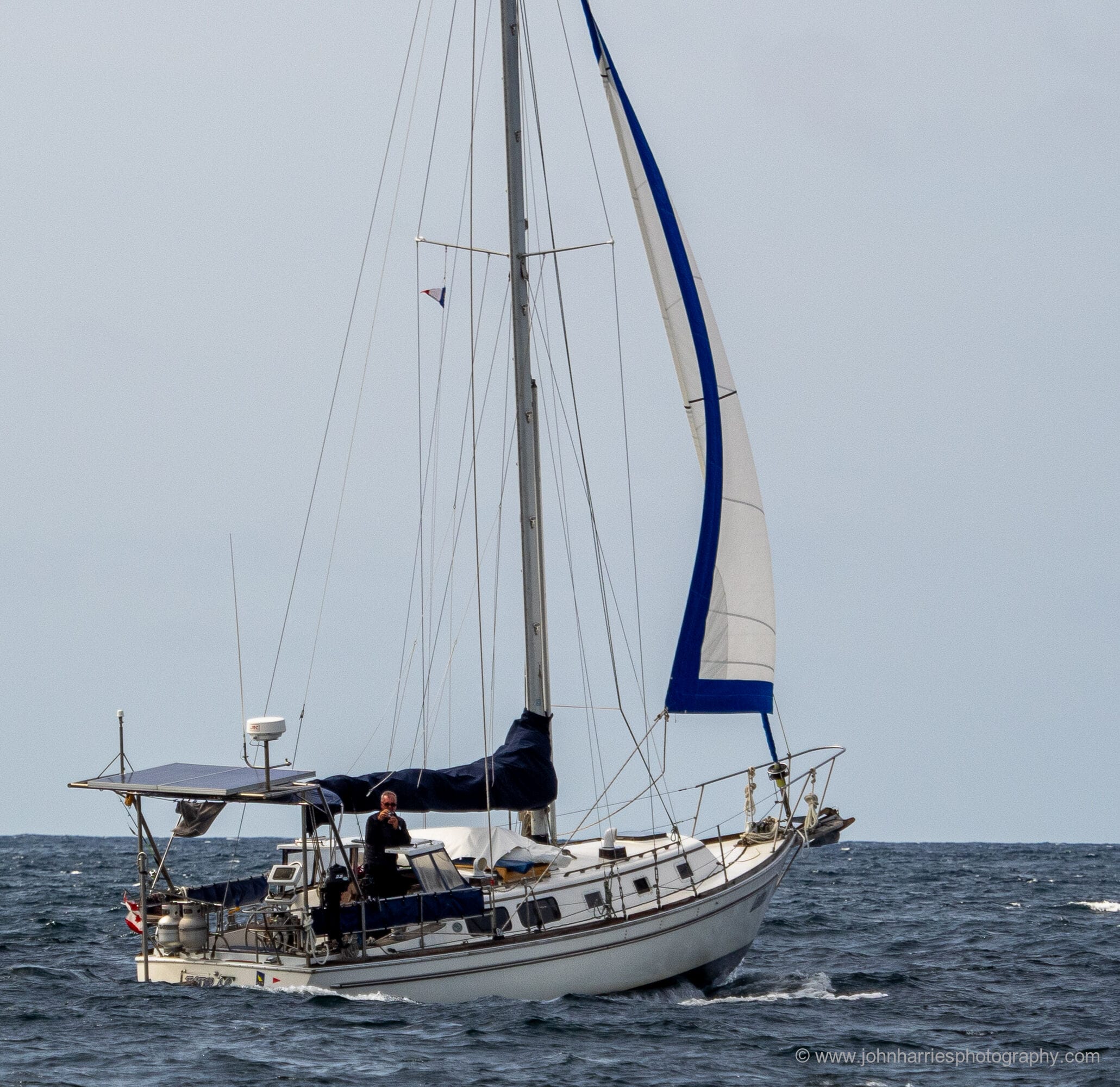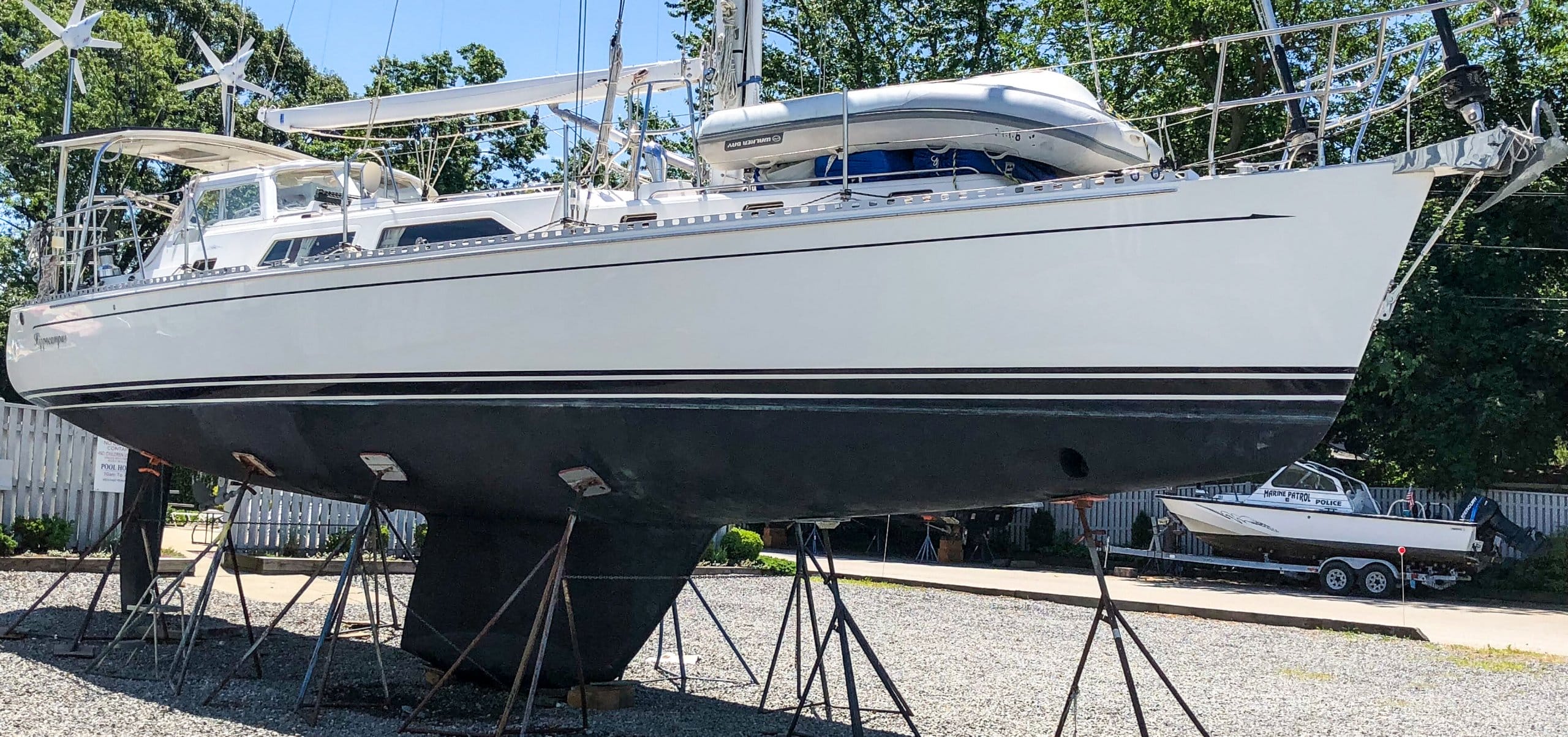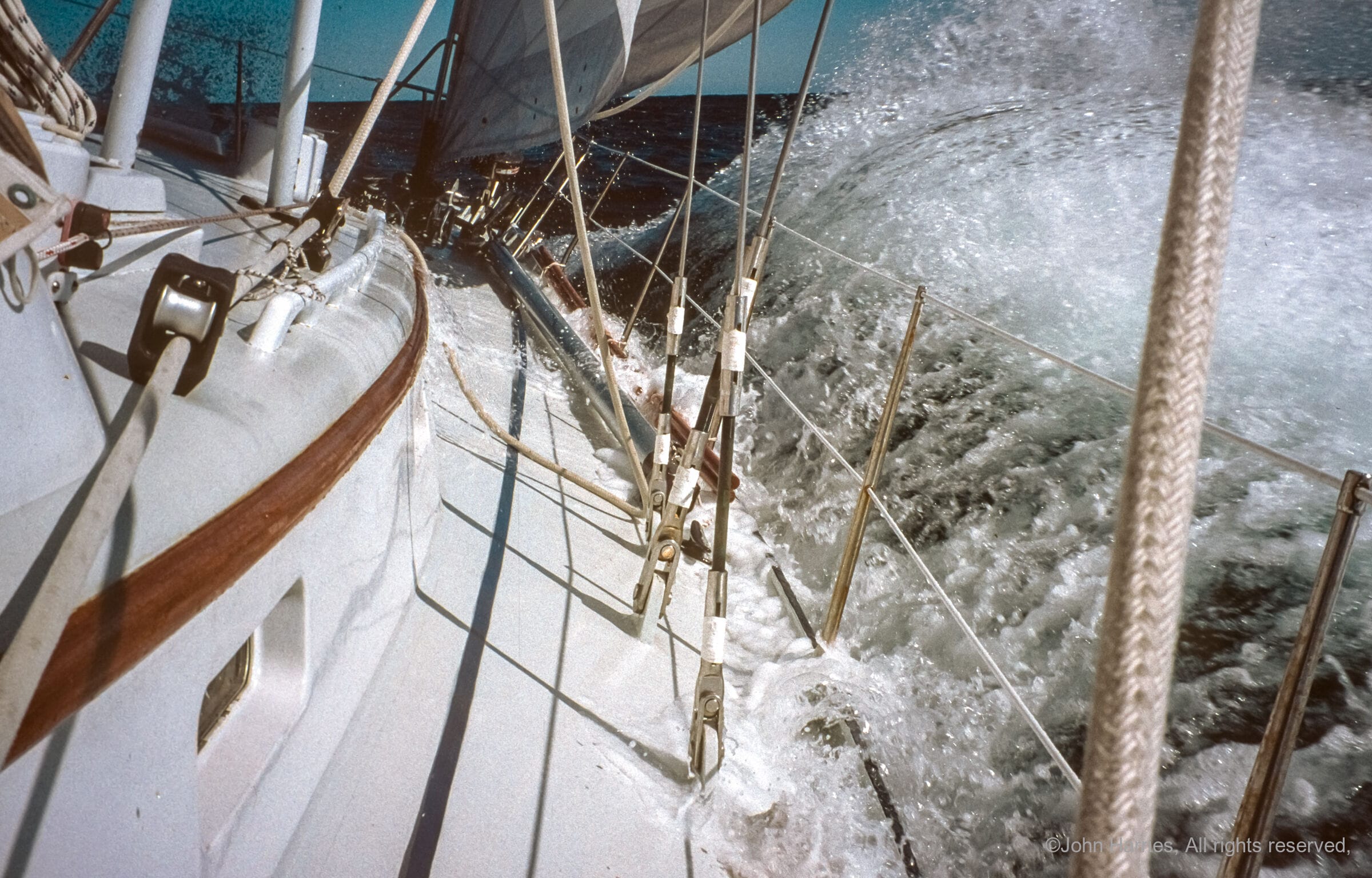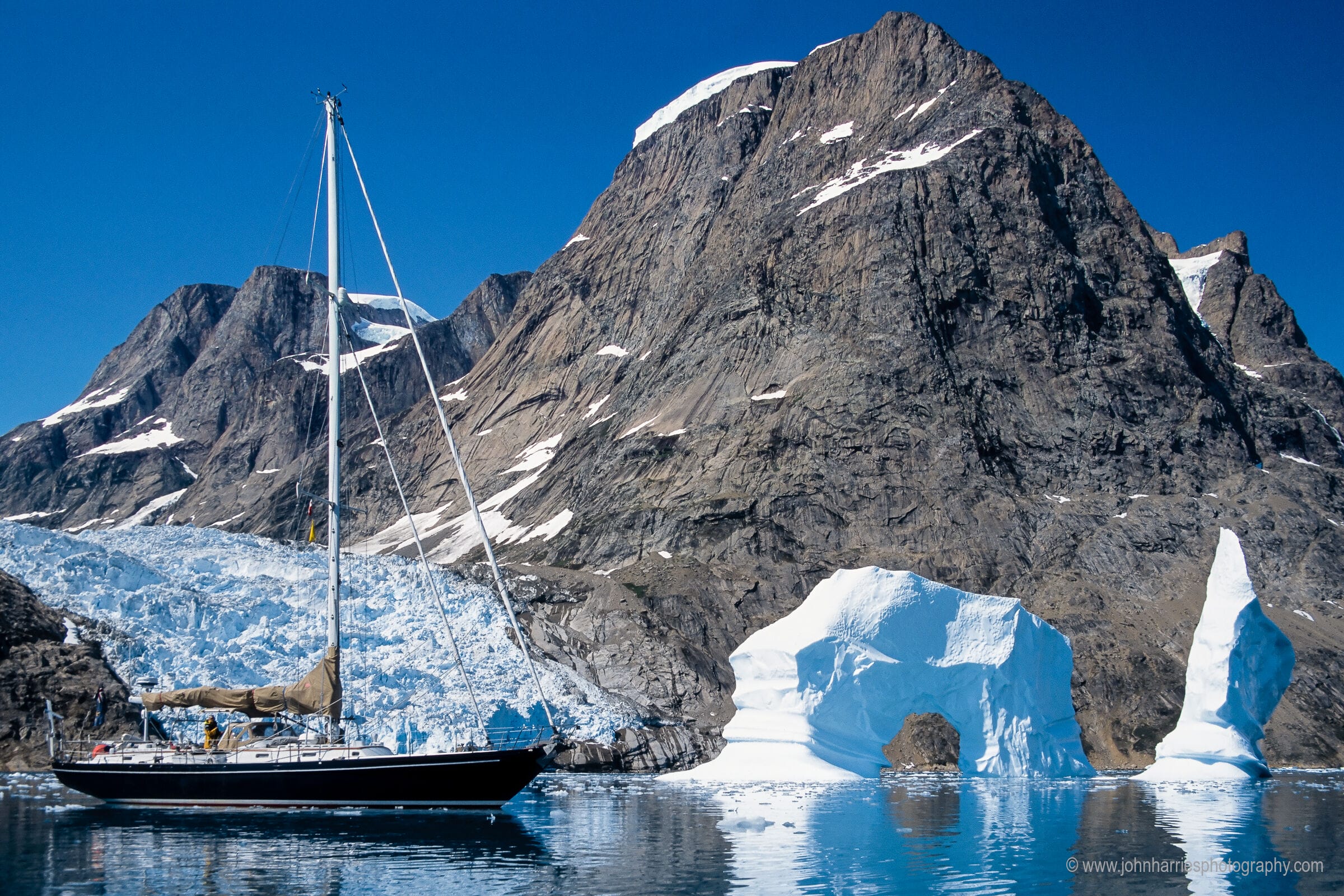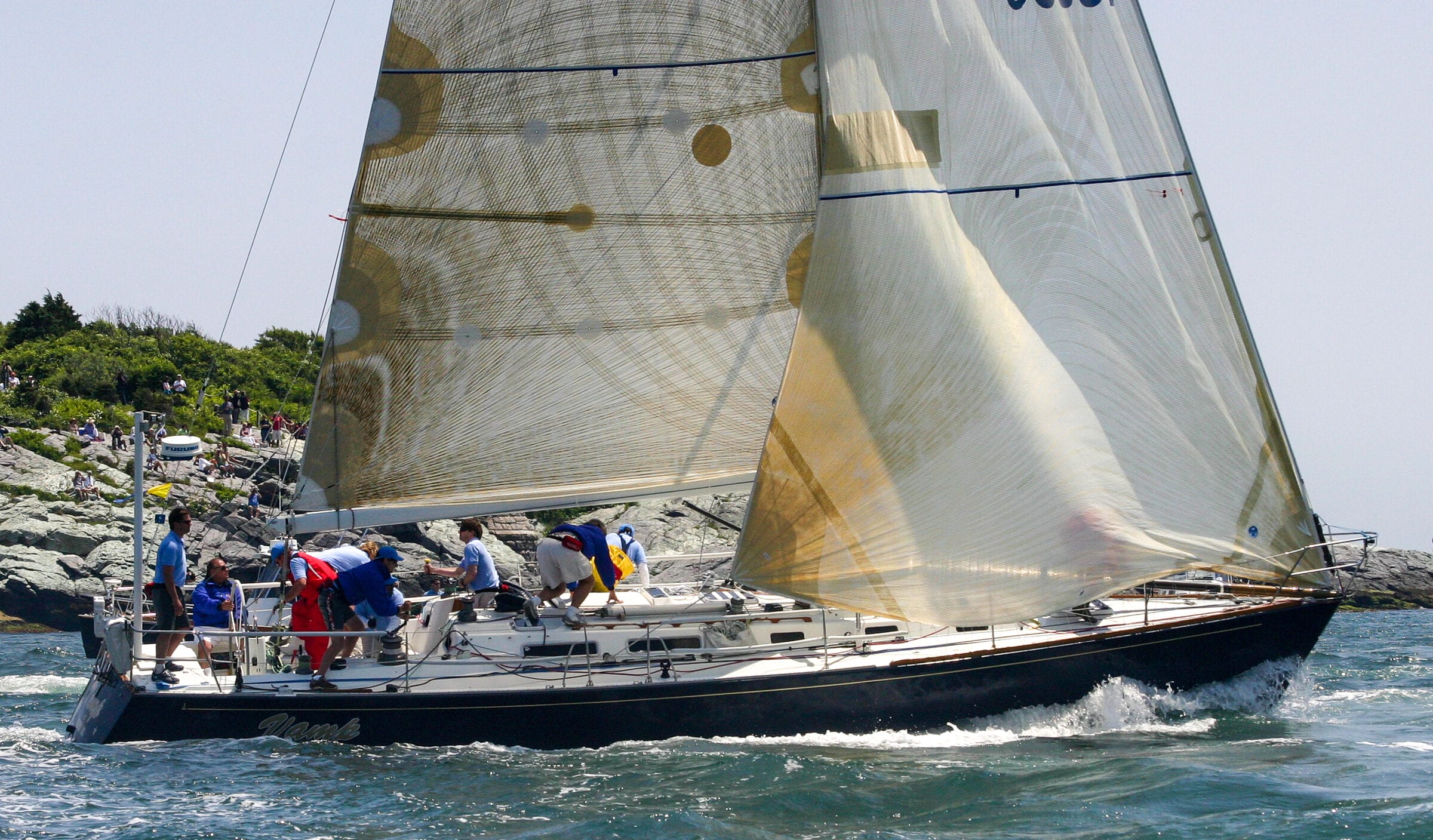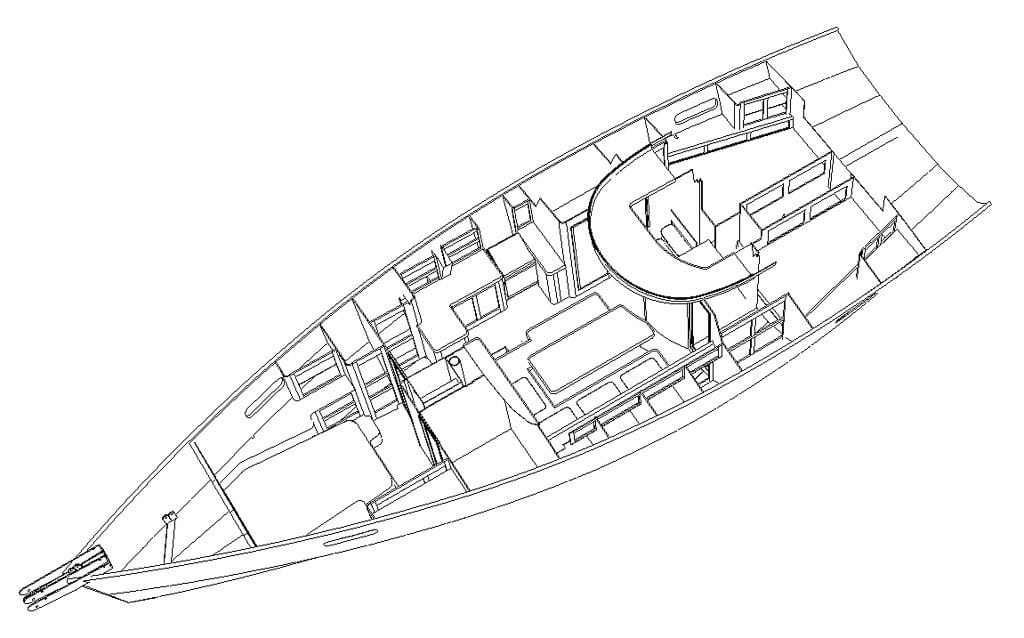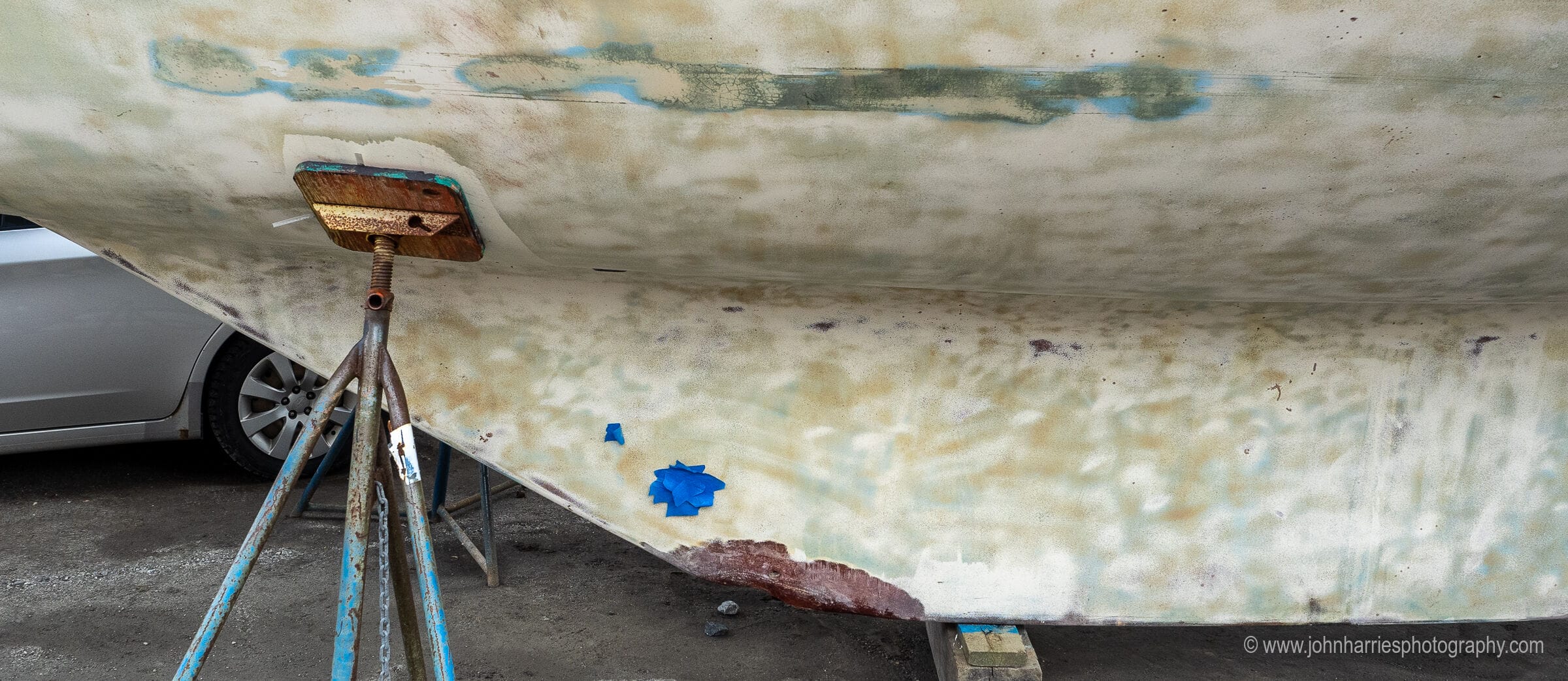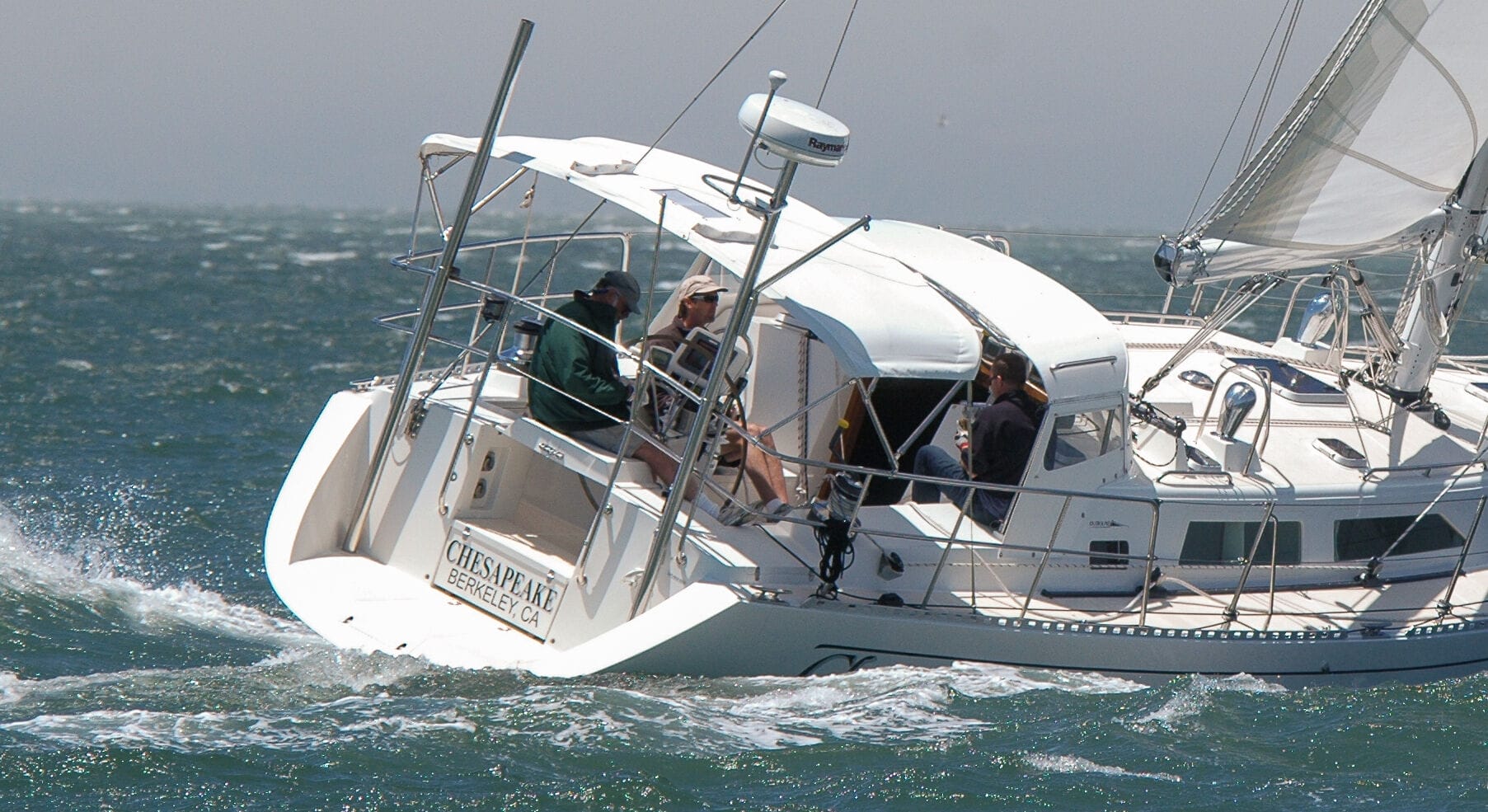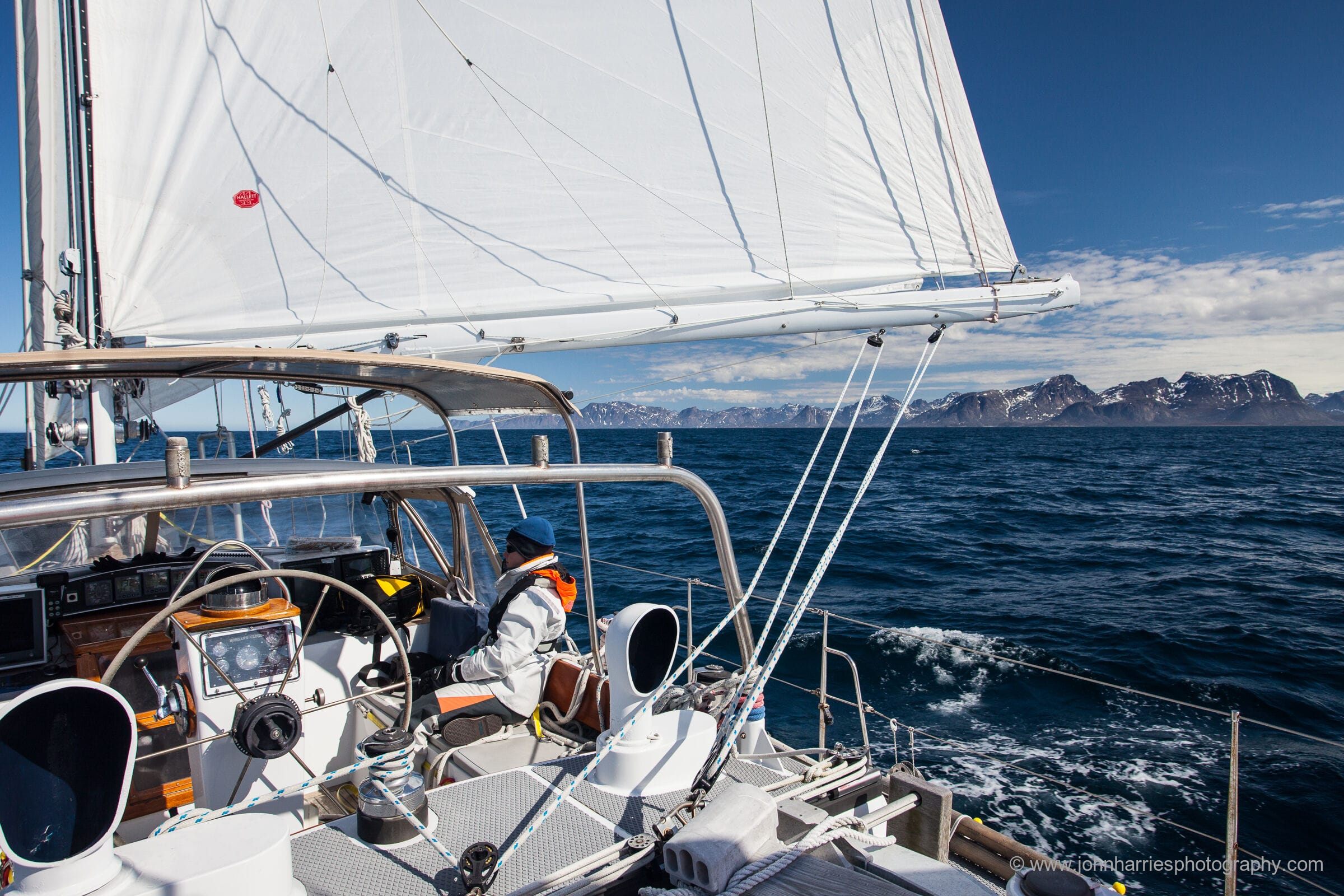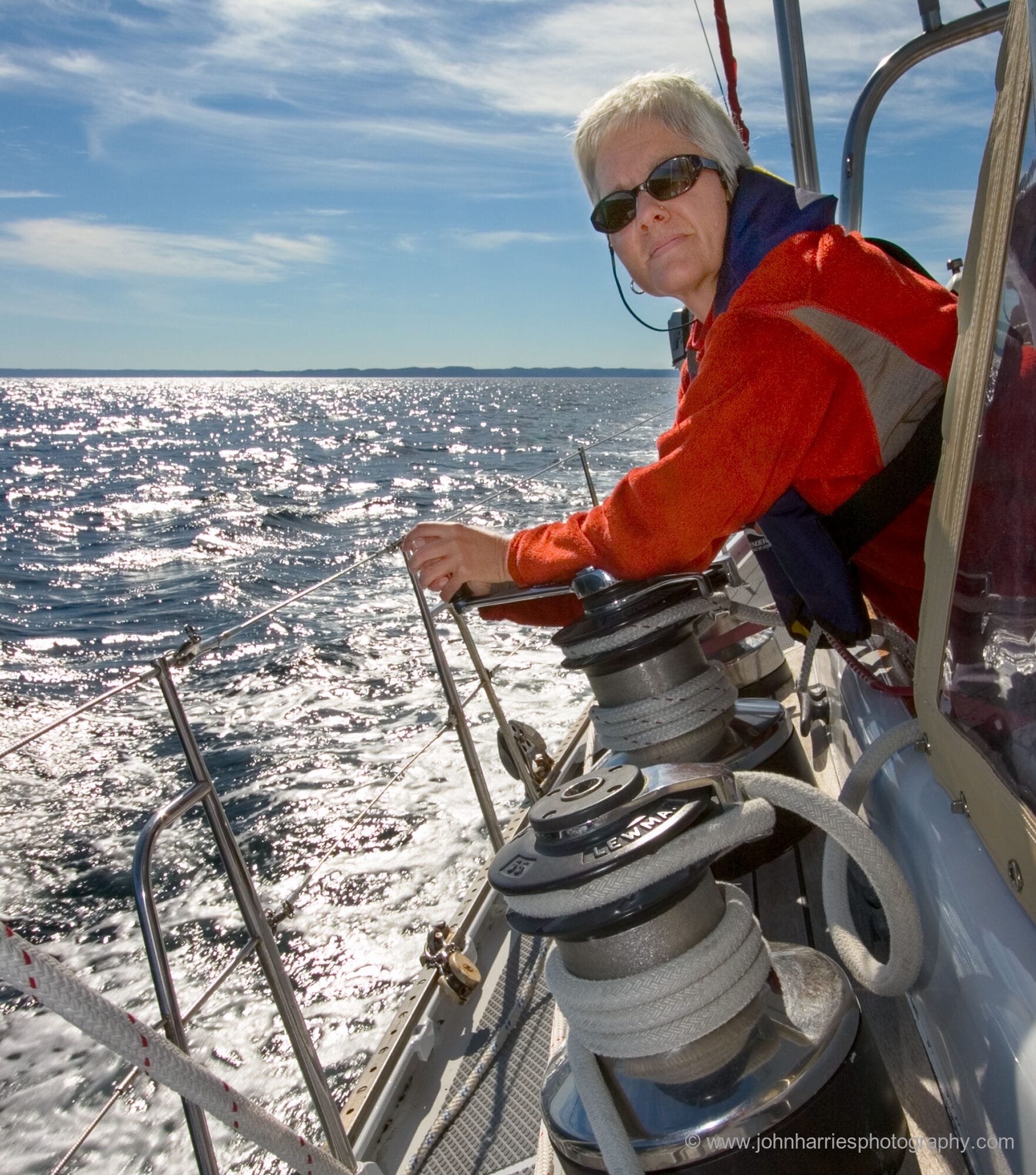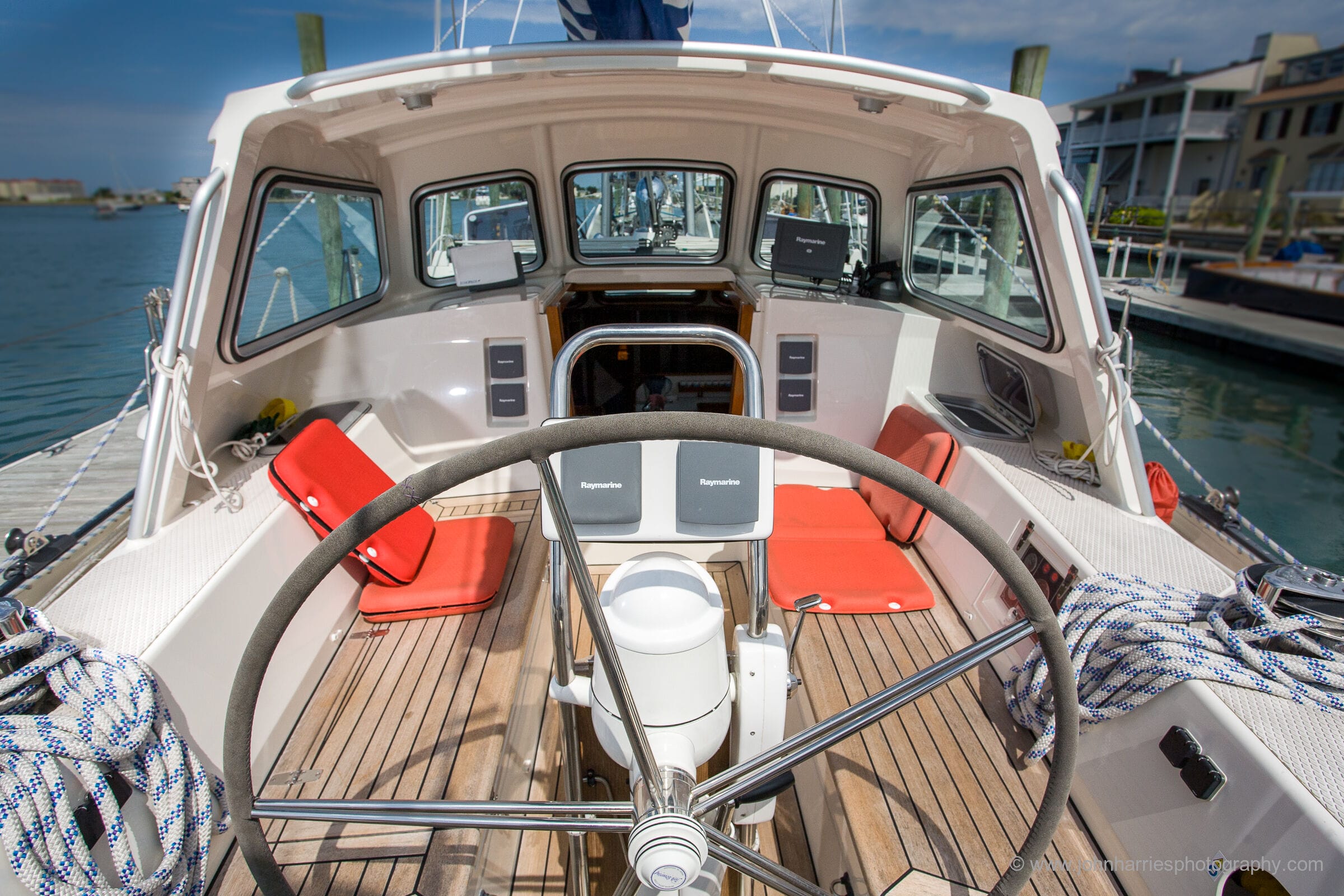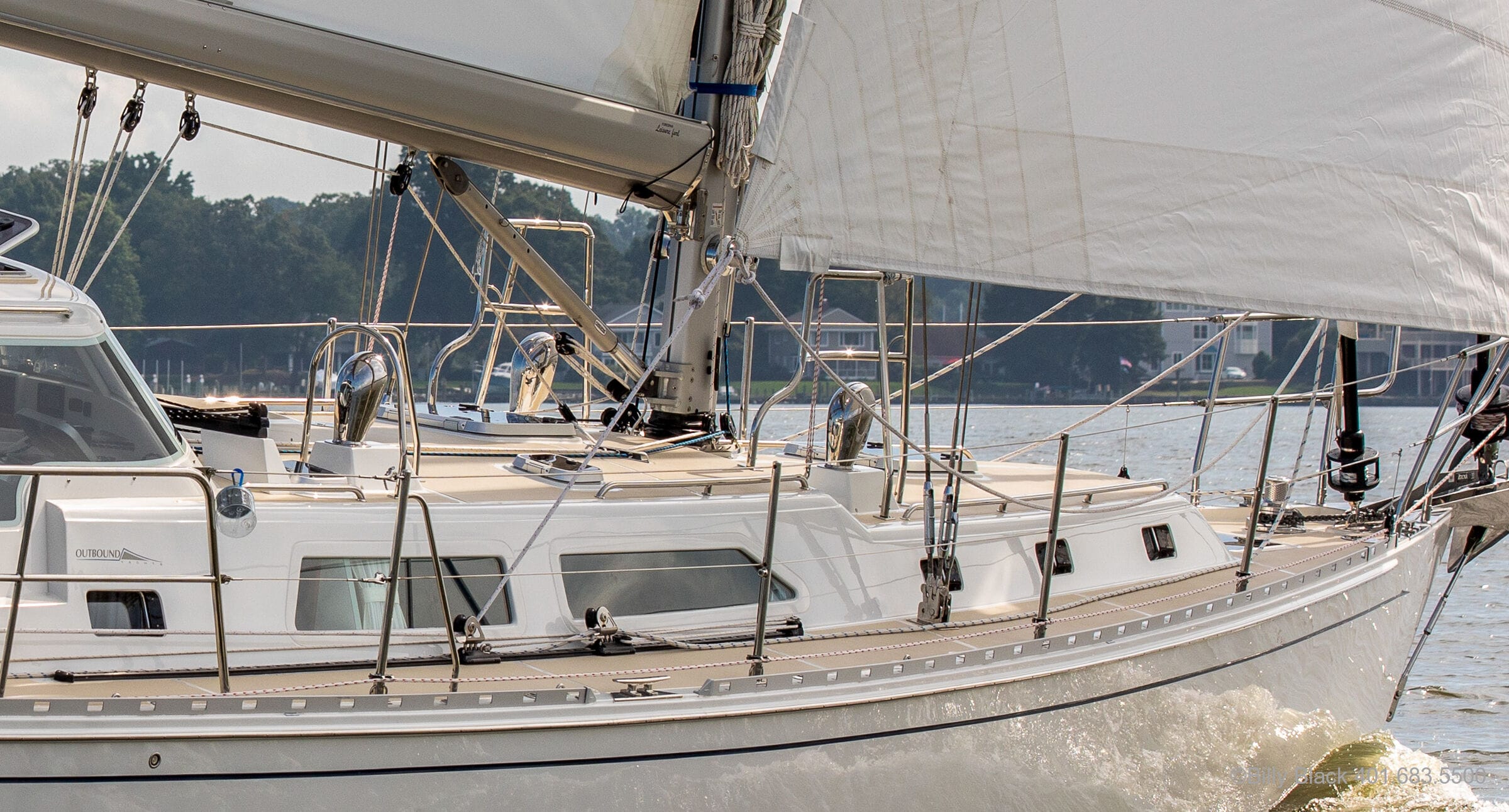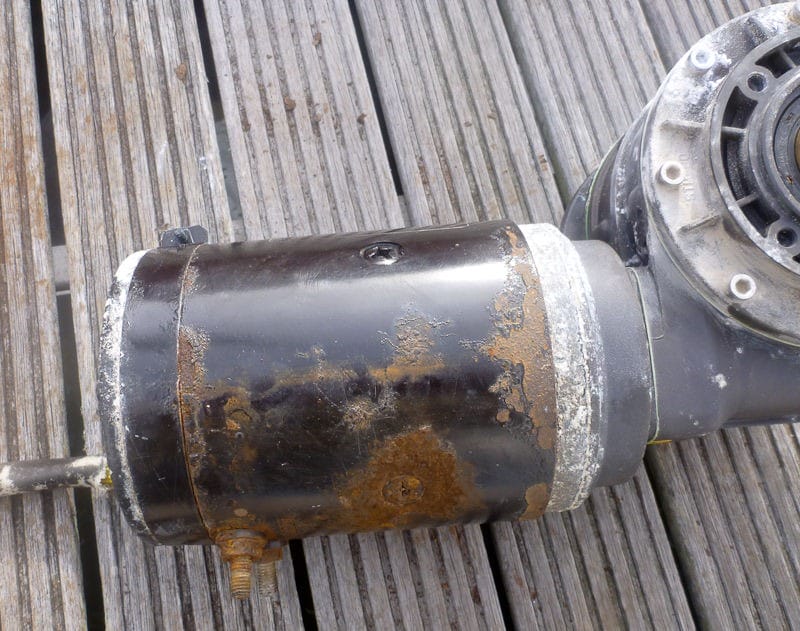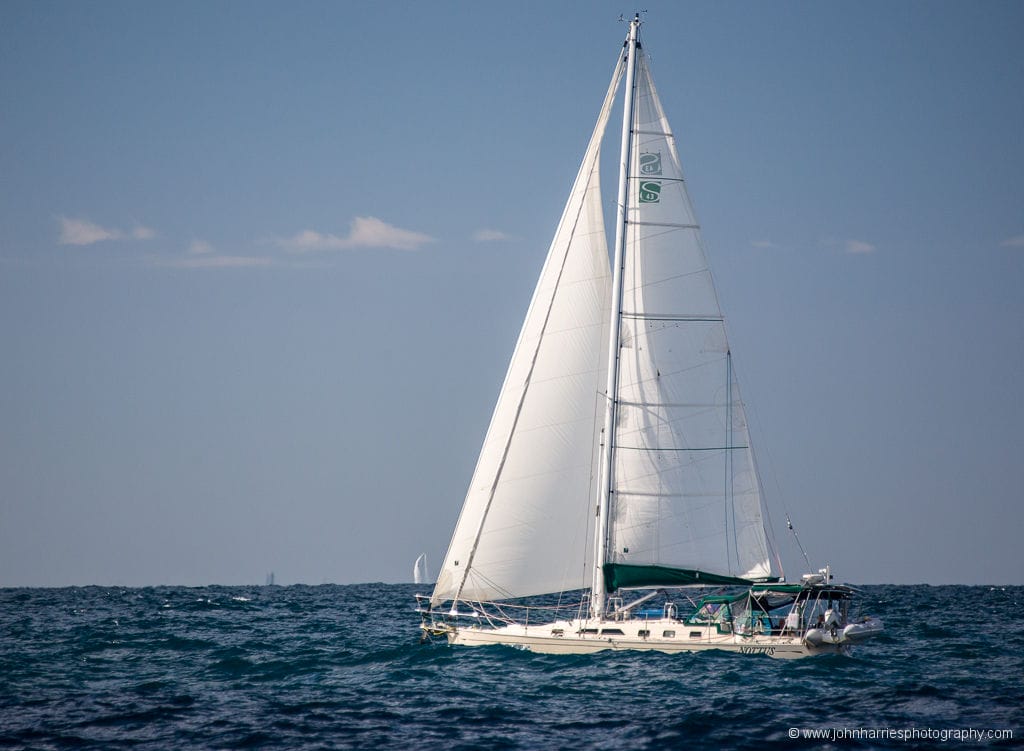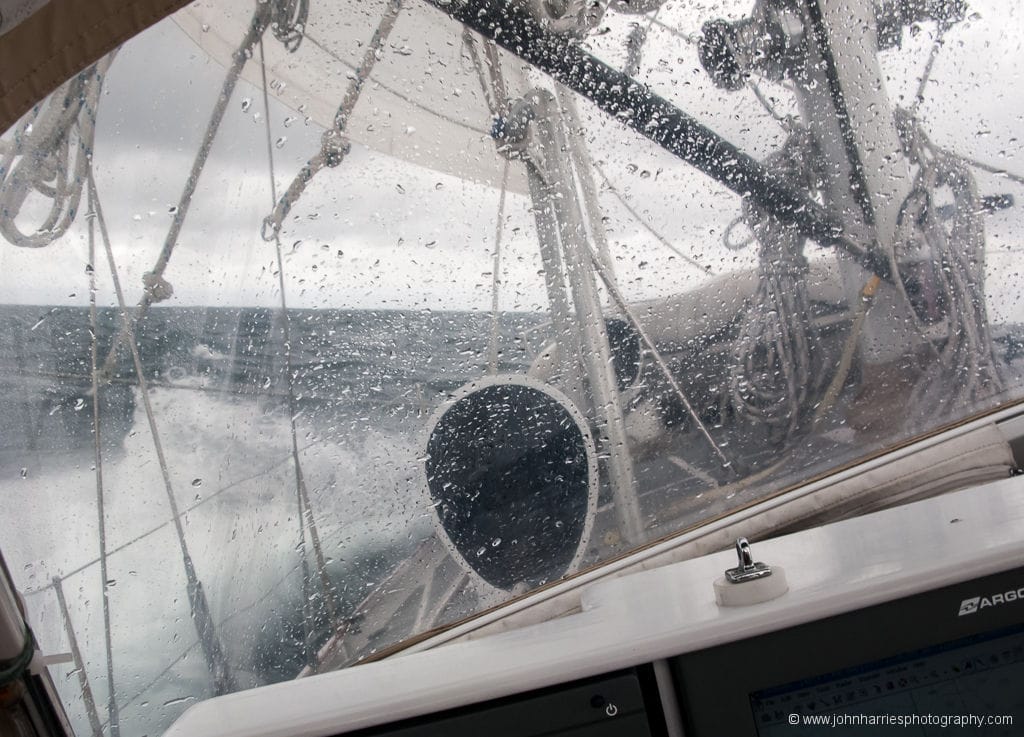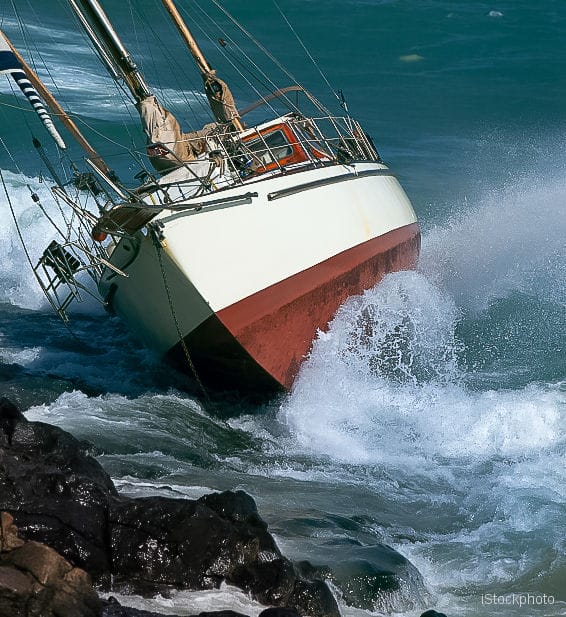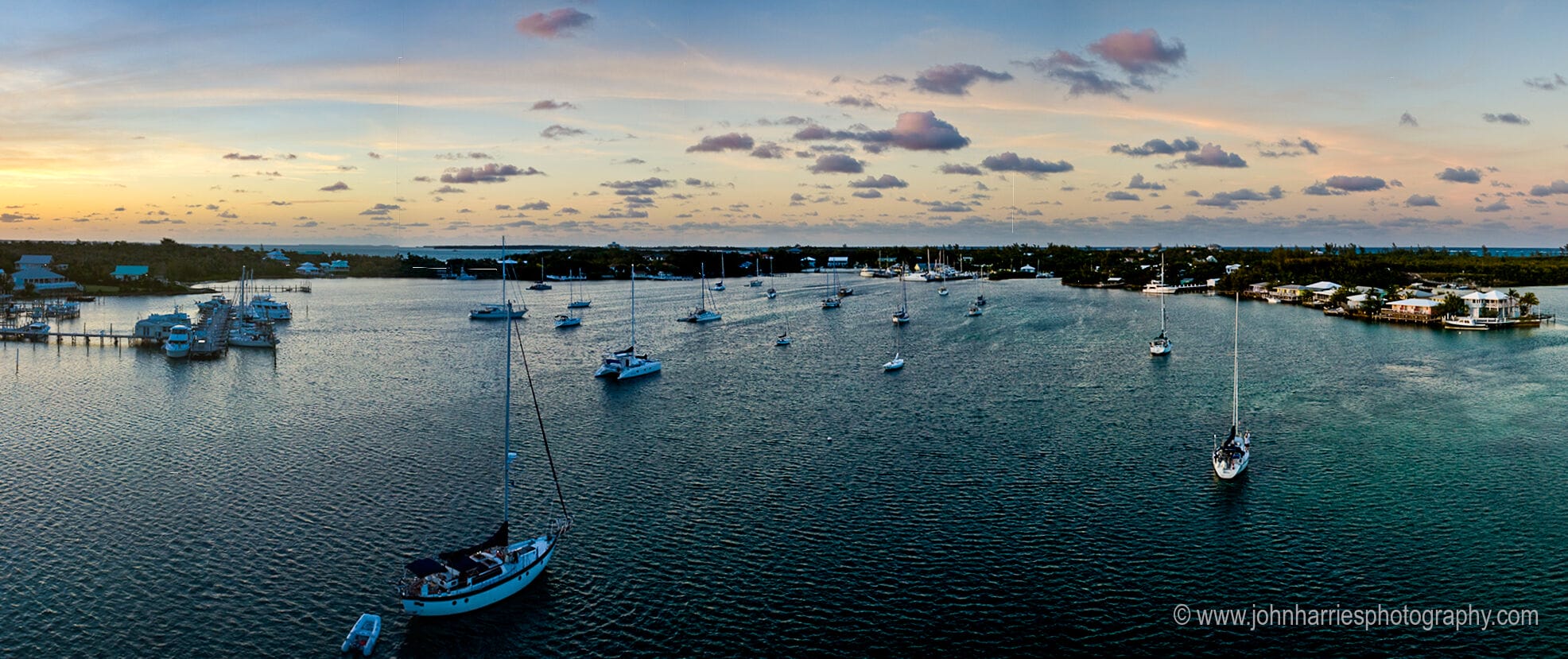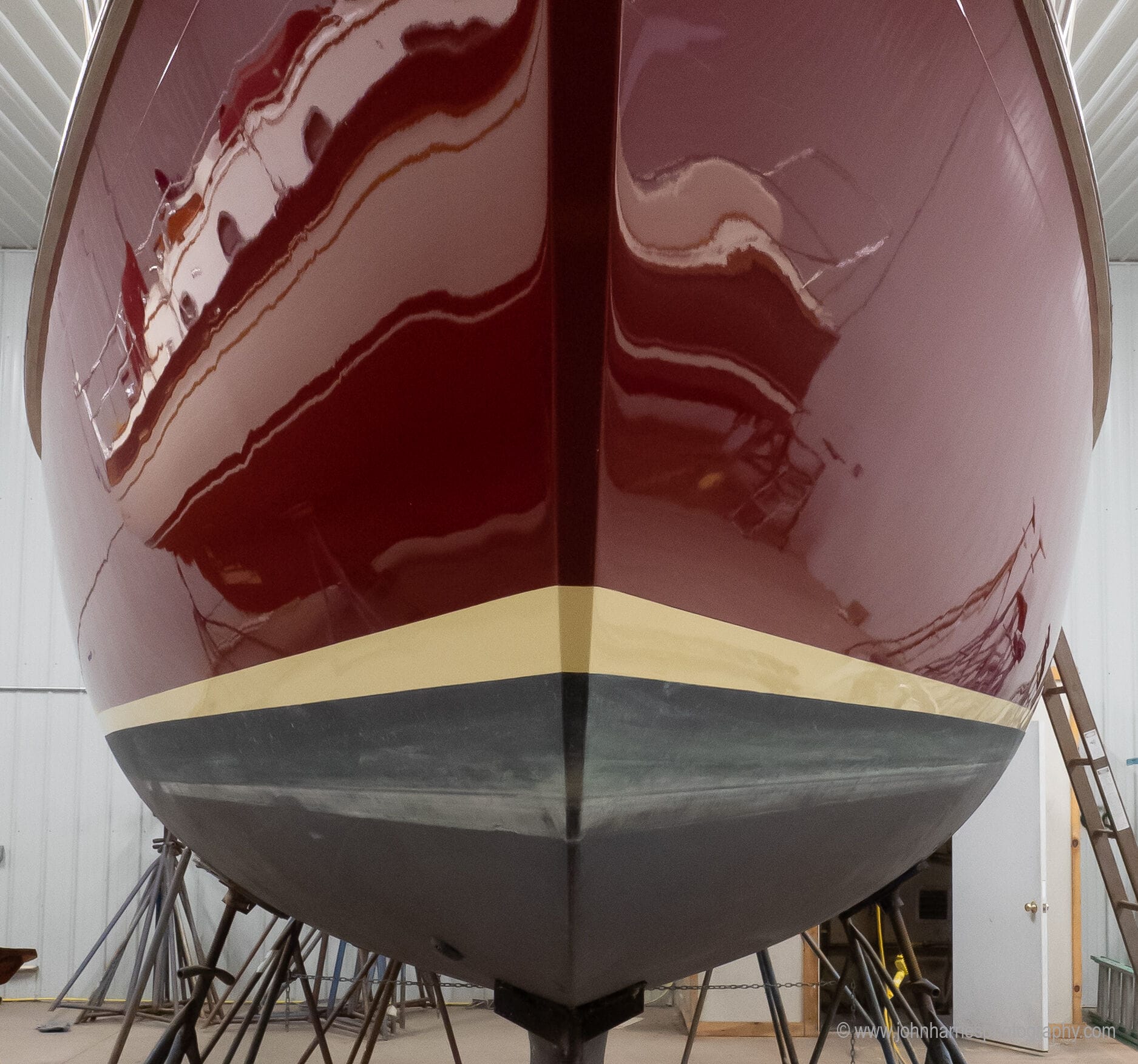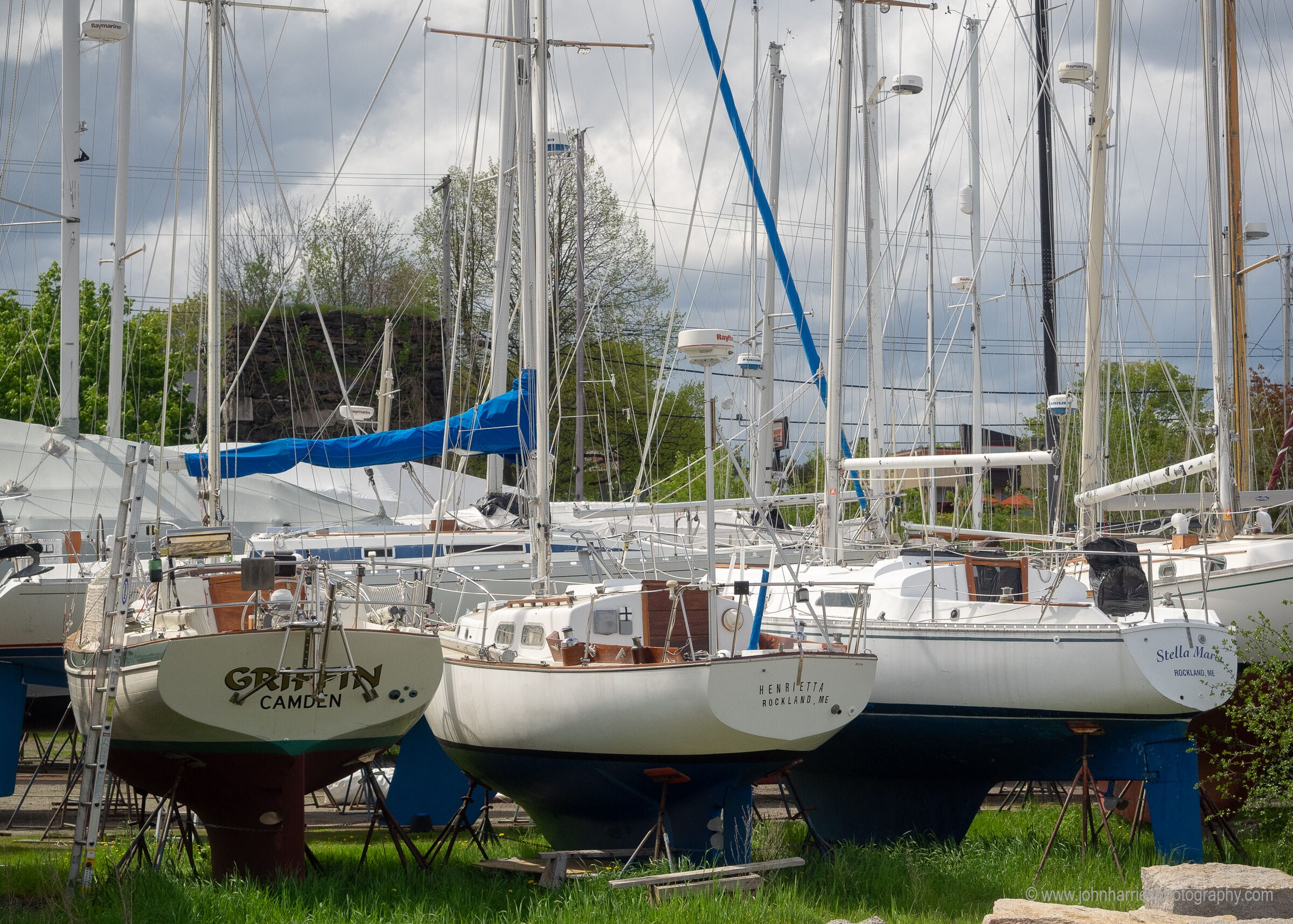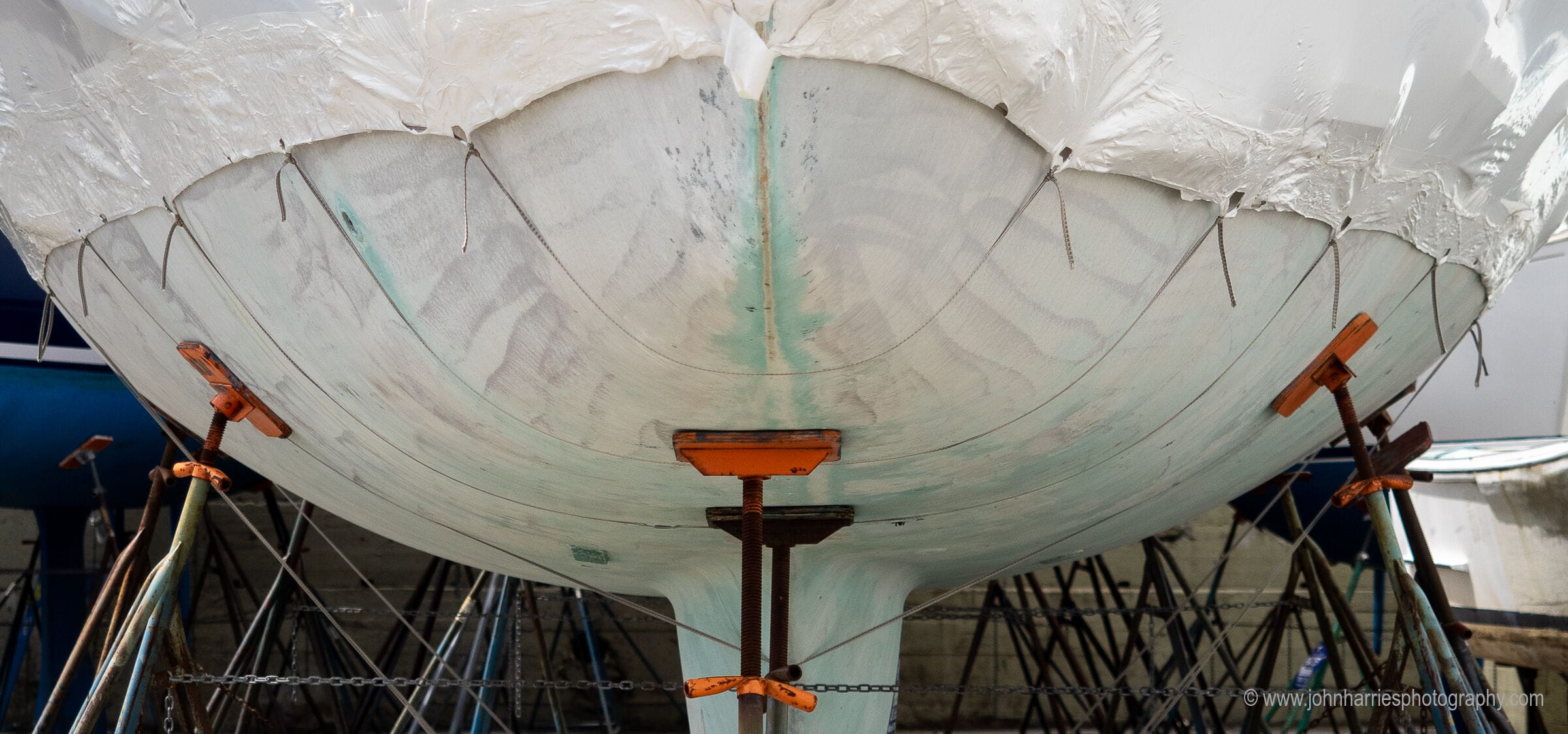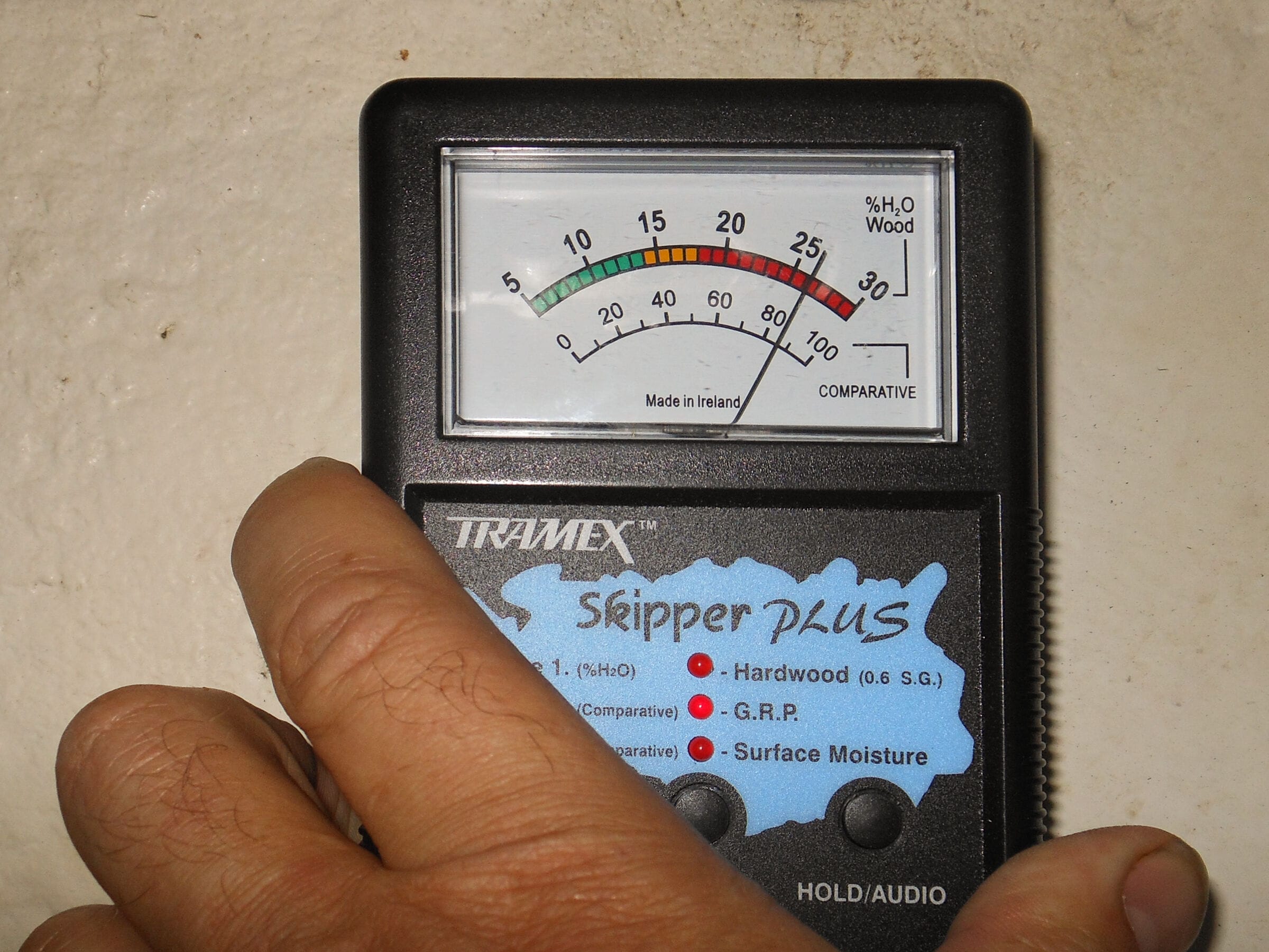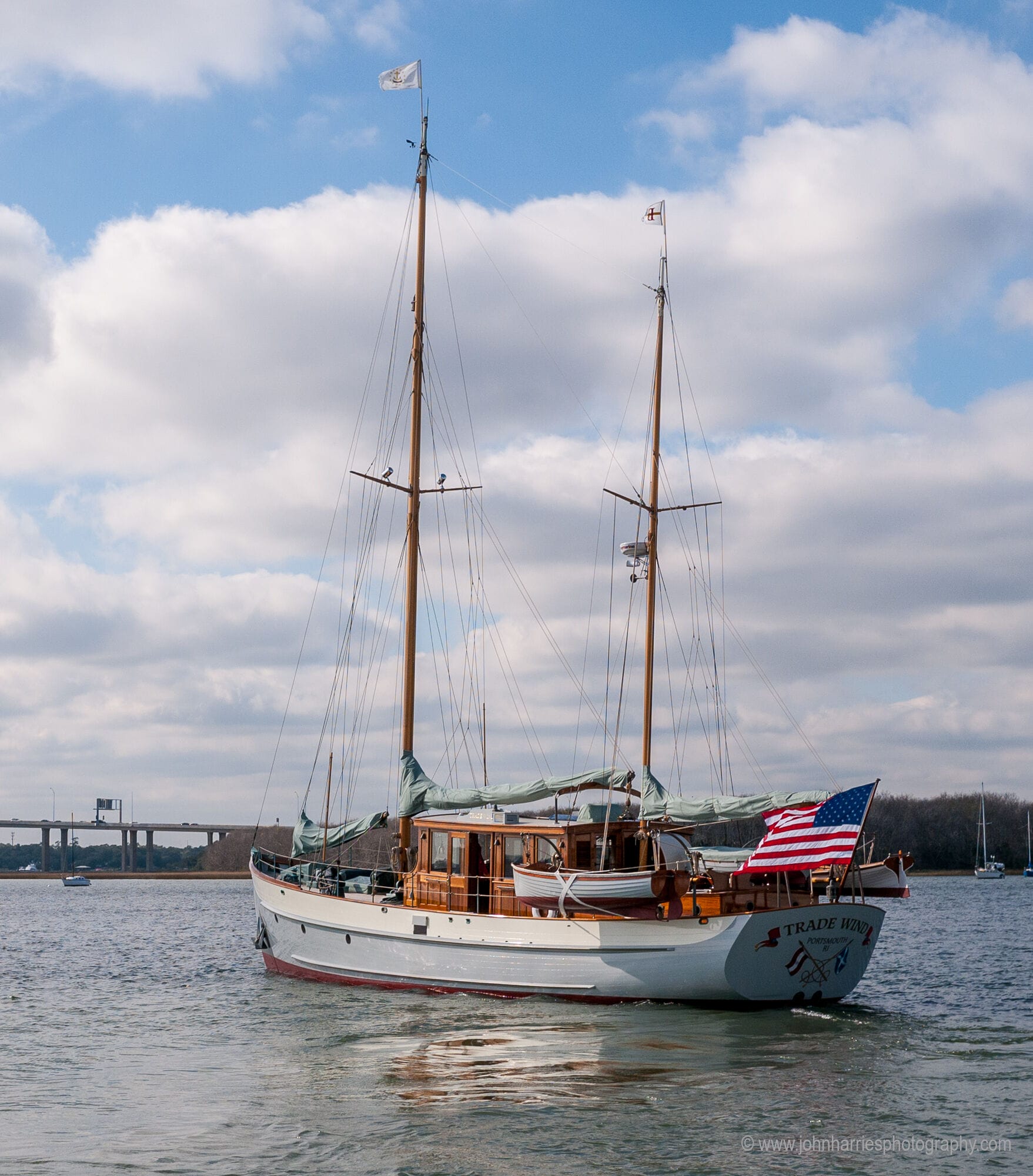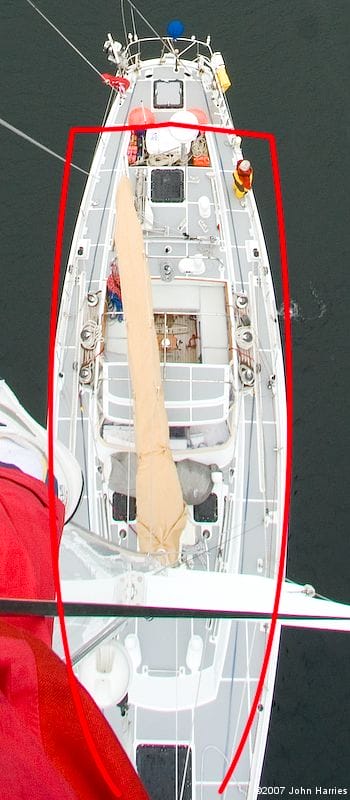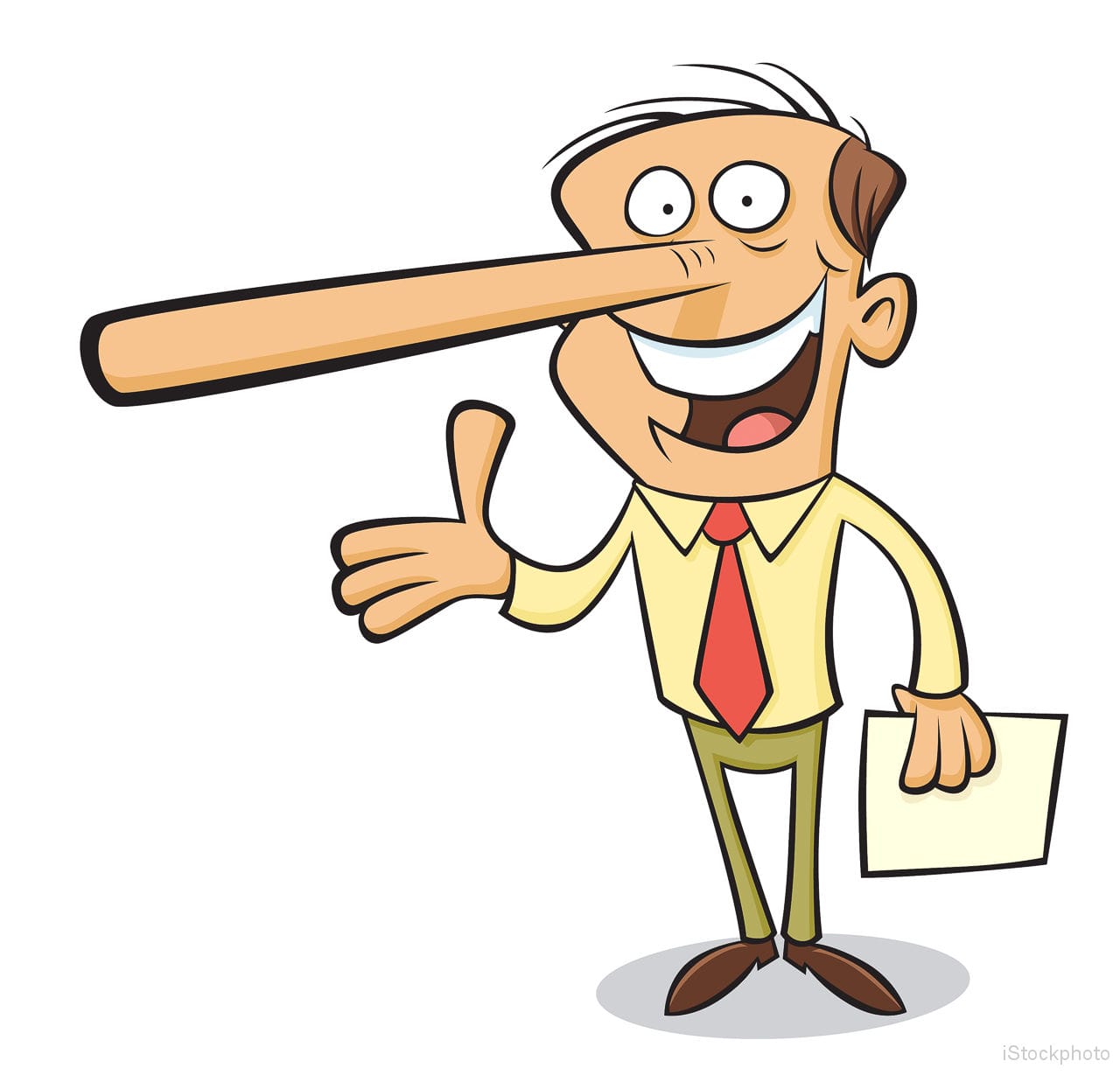Online Book: How To Buy a Cruising Boat
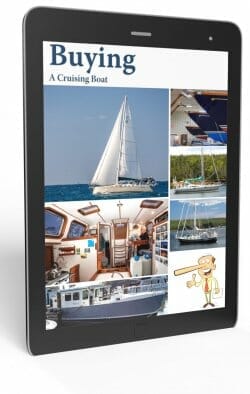
How to choose and buy a boat that will really make you happy including: the things the broker will not tell you, how to check over the boat yourself, and getting a good survey. All hard actionable advice.
Click for TOC or scroll down for details
Articles in this topic:
- The Right Way to Buy a Boat…And The Wrong Way
- Is It a Need or a Want?
- Buying a Boat—A Different Way To Think About Price
- Buying a Cruising Boat—Five Tips for The Half-Assed Option
- Are Refits Worth It?
- Buying a Boat—Never Say Never
- Selecting The Right Hull Form
- Five Ways That Bad Boats Happen
- How Weight Affects Boat Performance and Motion Comfort
- Easily Driven Boats Are Better
- 12 Tips To Avoid Ruining Our Easily Driven Sailboat
- Learn From The Designers
- You May Need a Bigger Boat Than You Think
- When Is A Cruising Sailboat Too Big?
- Catamaran, Trimaran, or Monohull—Motion Comfort
- Catamaran, Trimaran, or Monohull—Capsize Risk
- Sail Area: Overlap, Multihulls, And Racing Rules
- 8 Tips For a Great Cruising Boat Interior Arrangement
- Offshore Sailboat Keel Types
- Cockpits—Part 1, Safe and Seamanlike
- Cockpits—Part 2, Visibility and Ergonomics
- Offshore Sailboat Winches, Selection and Positioning
- Choosing a Cruising Boat—Shelter
- Choosing A Cruising Boat—Shade and Ventilation
- Pitfalls to Avoid When Buying a New Voyaging Boat
- Cyclical Loading: Why Offshore Sailing Is So Hard On A Boat
- Cycle Loading—8 Tips for Boat and Gear Purchases
- Characteristics of Boat Building Materials
- Impact Resistance—How Hull Materials Respond to Impacts
- Impact Resistance—Two Collision Scenarios
- Hull Materials, Which Is Best?
- Six Things We Need to Check Before Survey
- Six Warnings About Buying Fibreglass Boats
- Buying a Fibreglass Boat—Hiring a Surveyor and Managing the Survey
- What We Need to Know About Moisture Meters and Wet Fibreglass Laminate
- At What Age should You Stop Sailing And Buy a Motorboat?
- A Motorsailer For Offshore Voyaging?
- The Two Biggest Lies Yacht Brokers Tell
-
The Right Way to Buy a Boat…And The Wrong Way
118 CommentsReading Time: 6 minutesMembersRead more: The Right Way to Buy a Boat…And The Wrong WayBuying a boat is really difficult: What features are vital? Which features are dispensable? In this chapter, John comes up with a way for you to figure out what you need in a boat…and what you don’t.
-
Is It a Need or a Want?
49 CommentsReading Time: 4 minutesMembersRead more: Is It a Need or a Want?A fundamental fact is that, even if you are rich, you can’t have it all in an offshore voyaging boat and that goes double for the rest of us with more modest means. So the most important step in selecting a boat that will be successful for you is to identify the things that you really need. In this chapter I give you an easy to use and apply test to do just that.
-
Buying a Boat—A Different Way To Think About Price
81 CommentsReading Time: 5 minutesMembersRead more: Buying a Boat—A Different Way To Think About PricePhyllis and I have been thinking and talking a lot about which boat we will buy after Morgan’s Cloud sells. And a big part of that has been setting a specification and budget, but in a different way.
-
Buying a Cruising Boat—Five Tips for The Half-Assed Option
43 CommentsReading Time: 7 minutesMembersRead more: Buying a Cruising Boat—Five Tips for The Half-Assed OptionWhen researching buying a cruising boat, we are deluged with information on all the gear she must have and how perfect she must be before we can go cruising. But is that really true? How about buying an old and tired boat and just getting out there? John tells his story of going cruising in a half-assed boat…and having one of the best times in his life. Will this work for you? He shares tips on how to decide.
-
Are Refits Worth It?
113 CommentsReading Time: 6 minutesMembersRead more: Are Refits Worth It?It seems like a logical way to own a good offshore sailboat. Buy an older and a bit rundown but fundamentally decent boat and refit it. But does it really work? To explore that important question, I have a true story to tell you.
-
Buying a Boat—Never Say Never
31 CommentsReading Time: 4 minutesMembersRead more: Buying a Boat—Never Say NeverHang around with cruisers, and sooner or later someone will say, “Never buy a boat with…” Should we listen? John shares how to decide, and examines the choice between encapsulated and bolt on keels.
-
Selecting The Right Hull Form
23 CommentsReading Time: 15 minutesMembersRead more: Selecting The Right Hull FormThe most important decision when buying a boat is choosing the right hull. Get that wrong and all else is wasted. Matt shines a light on how to recognize good cruising hull designs and then relates that to real boats.
-
Five Ways That Bad Boats Happen
60 CommentsReading Time: 10 minutesMembersRead more: Five Ways That Bad Boats HappenBuying a poorly designed boat is one of the most costly and heart breaking mistakes anyone can make. But maybe if we understand how bad designs come to be, we can avoid that.
-
How Weight Affects Boat Performance and Motion Comfort
60 CommentsReading Time: 11 minutesMembersRead more: How Weight Affects Boat Performance and Motion ComfortIt’s tempting to think that the more cool stuff a boat has, the better she is for cruising, but that approach can make the boat slow and uncomfortable. Eric explains how to tell when adding gear has gone too far.
-
Easily Driven Boats Are Better
85 CommentsReading Time: 12 minutesMembersRead more: Easily Driven Boats Are BetterJohn explains one of the most important criteria for selecting an offshore voyaging boat, and one of the most ignored.
-
12 Tips To Avoid Ruining Our Easily Driven Sailboat
66 CommentsReading Time: 11 minutesFreeRead more: 12 Tips To Avoid Ruining Our Easily Driven SailboatWe bought a lovely easily driven offshore cruising sailboat, but it’s all too easy to screw her up if we don’t heed these tips.
-
Learn From The Designers
16 CommentsReading Time: 5 minutesMembersRead more: Learn From The DesignersOne of the saddest things that can happen to a cruiser is buying a fundamentally bad boat, and there are plenty of those out there to tempt the uninformed. Here’s how to make sure that the boat you buy is well designed.
-
You May Need a Bigger Boat Than You Think
31 CommentsReading Time: 8 minutesMembersRead more: You May Need a Bigger Boat Than You ThinkSo what boat size is optimal for offshore voyaging? There is no one number. Rather, we must understand our own expectations before we can zero in on that. John tells the story of a smart guy that saved him from getting this wrong.
-
When Is A Cruising Sailboat Too Big?
59 CommentsReading Time: 10 minutesMembersRead more: When Is A Cruising Sailboat Too Big?In recent years, cruising boats have got ever bigger, but what’s the safe upper limit, particularly for a shorthanded amateur crew? John used his 30 years of experience voyaging in a 56-foot boat to answer that vital question.
-
Catamaran, Trimaran, or Monohull—Motion Comfort
68 CommentsReading Time: 12 minutesMembersRead more: Catamaran, Trimaran, or Monohull—Motion ComfortAre catamarans really more comfortable than monohulls? What about trimarans? Like with most things, it depends.
-
Catamaran, Trimaran, or Monohull—Capsize Risk
49 CommentsReading Time: 10 minutesMembersRead more: Catamaran, Trimaran, or Monohull—Capsize RiskWhenever multihulls are discussed, capsize risk is sure to come up, but monohulls have that problem too, just for different reasons.
-
Sail Area: Overlap, Multihulls, And Racing Rules
59 CommentsReading Time: 10 minutesMembersRead more: Sail Area: Overlap, Multihulls, And Racing RulesOne of the most important decisions we need to make when buying an offshore voyaging sailboat is how much sail area, in relation to displacement, boat type, and draft, is right for our style of cruising.
-
8 Tips For a Great Cruising Boat Interior Arrangement
87 CommentsReading Time: 7 minutesMembersRead more: 8 Tips For a Great Cruising Boat Interior ArrangementMost cruising boats, both power and sail, have interior arrangements that are designed to look good at a boat show, not work well offshore or when living aboard for extended periods while voyaging. Here’s how to fix that.
-
Offshore Sailboat Keel Types
56 CommentsReading Time: 7 minutesMembersRead more: Offshore Sailboat Keel TypesJohn applies risk management thinking to the highly ambiguous subject of keel safety and longevity on older fibreglass boats, starting off with keel types to seek out and those to avoid.
-
Cockpits—Part 1, Safe and Seamanlike
76 CommentsReading Time: 11 minutesMembersRead more: Cockpits—Part 1, Safe and SeamanlikeThese days there seems to be an endless fascination with yacht (both motor and sail) cockpit amenities, but we must never lose sight of a cockpit’s primary function: to be the command and control centre of a vehicle that operates in a potentially hostile environment.
-
Cockpits—Part 2, Visibility and Ergonomics
49 CommentsReading Time: 8 minutesMembersRead more: Cockpits—Part 2, Visibility and ErgonomicsThere are few areas on any boat that are used for more diverse tasks than an offshore sailboat cockpit. Everything from lounging on a quiet day at anchor to handling a fast-moving emergency at sea with a bunch of sail up…in the black dark…in fog…with a ship bearing down on us. Given that, picking a boat with a good cockpit layout is one of the most important parts of boat selection. Let’s look at what really matters.
-
Offshore Sailboat Winches, Selection and Positioning
57 CommentsReading Time: 10 minutesMembersRead more: Offshore Sailboat Winches, Selection and PositioningThese days the offshore sailing community seems to be fixated on rig automation, but a well-specified and installed set of winches will contribute far more to a successful passage than all that expensive failure-prone stuff.
-
Choosing a Cruising Boat—Shelter
30 CommentsReading Time: 11 minutesMembersRead more: Choosing a Cruising Boat—ShelterJohn takes a deep dive into the tradeoffs between open cockpits, dodgers, enclosures, raised salons and wheelhouses on offshore boats.
-
Choosing A Cruising Boat—Shade and Ventilation
16 CommentsReading Time: 12 minutesMembersRead more: Choosing A Cruising Boat—Shade and VentilationA cruising boat without adequate shade and ventilation can make life a living hell once we head for the palm trees. Here’s how to choose a cruising boat that will be comfortable in hot places.
-
Pitfalls to Avoid When Buying a New Voyaging Boat
94 CommentsReading Time: 5 minutesMembersRead more: Pitfalls to Avoid When Buying a New Voyaging BoatWhat about buying a brand new boat? That should be great if you have the money, right? Yes, but with caveats. And if you think that buying a brand new boat will enable you to just jump aboard and go voyaging, this sobering story will show another far more likely scenario and highlight the traps to avoid in buying a new boat.
-
Cyclical Loading: Why Offshore Sailing Is So Hard On A Boat
22 CommentsReading Time: 5 minutesMembersRead more: Cyclical Loading: Why Offshore Sailing Is So Hard On A BoatIt’s an all too common story: a boat that has been structurally fine for years while sailing inshore starts to come apart as soon as she is sailed offshore. This chapter explains why and will give you a good basis in the underlying engineering theory that will help you choose a boat that won’t let you down offshore.
-
Cycle Loading—8 Tips for Boat and Gear Purchases
28 CommentsReading Time: 6 minutesMembersRead more: Cycle Loading—8 Tips for Boat and Gear PurchasesIn this chapter, John applies the theory of cycle loading that Matt explained in the last chapter to come up with solid rules you can apply to boat and gear purchases.
-
Characteristics of Boat Building Materials
42 CommentsReading Time: 7 minutesMembersRead more: Characteristics of Boat Building MaterialsMatt takes a look at the materials available that offshore voyaging boat hulls are generally built of and explains the benefits and drawbacks of each one.
-
Impact Resistance—How Hull Materials Respond to Impacts
30 CommentsReading Time: 6 minutesMembersRead more: Impact Resistance—How Hull Materials Respond to ImpactsMatt carries on from the last chapter and examines how the various materials voyaging boat hulls are built out of will survive a collision with a hard object.
-
Impact Resistance—Two Collision Scenarios
23 CommentsReading Time: 5 minutesMembersRead more: Impact Resistance—Two Collision ScenariosThe sad fact is that many, perhaps most, production sailboats are not built to take the loads imposed by even a moderate collision or grounding. In this chapter Matt, AAC’s Technical Correspondent, explains the engineering and shares what to look for before buying a voyaging boat.
-
Hull Materials, Which Is Best?
57 CommentsReading Time: 6 minutesFreeRead more: Hull Materials, Which Is Best?One of the common debates in any sailor’s bar is which hull material is best. John settles the argument…it depends. But he does make some solid recommendations for hull materials most of us should avoid and the one that the majority should choose.
-
Six Things We Need to Check Before Survey
70 CommentsReading Time: 7 minutesMembersRead more: Six Things We Need to Check Before SurveySurveys are expensive so here are six things we should check ourselves first.
-
Six Warnings About Buying Fibreglass Boats
71 CommentsReading Time: 7 minutesMembersRead more: Six Warnings About Buying Fibreglass BoatsThere are a huge number of second-hand fibreglass cruising boats for sale, but very few good ones. Here is how to weed out some of the junk.
-
Buying a Fibreglass Boat—Hiring a Surveyor and Managing the Survey
39 CommentsReading Time: 10 minutesMembersRead more: Buying a Fibreglass Boat—Hiring a Surveyor and Managing the SurveyWhenever the subject of buying a boat comes up, the horror stories about surveys that failed to find serious, or even catastrophic, structural problems are sure to follow. John interviews industry expert Steve D’Antonio to learn how to avoid having our very own survey horror story.
-
What We Need to Know About Moisture Meters and Wet Fibreglass Laminate
10 CommentsReading Time: 7 minutesMembersRead more: What We Need to Know About Moisture Meters and Wet Fibreglass LaminateThere is endless debate about the effectiveness of moisture meters. Here are the facts from Steve D’ Antonio, who has used one for decades, together with some thoughts from John.
-
At What Age should You Stop Sailing And Buy a Motorboat?
2 CommentsReading Time: 2 minutesMembersRead more: At What Age should You Stop Sailing And Buy a Motorboat?Is there an age when you should buy a motorboat or motorsailer, rather than a sailboat, for offshore voyaging? I take a look at that by answering a question from a reader.
-
A Motorsailer For Offshore Voyaging?
11 CommentsReading Time: 2 minutesMembersRead more: A Motorsailer For Offshore Voyaging?Carrying on from the last chapter, I take a look at motorsailers, again by answering a question from a reader. Do motorsailers make sense for offshore cruising? Read on to find out.
-
The Two Biggest Lies Yacht Brokers Tell
46 CommentsReading Time: 3 minutesMembersRead more: The Two Biggest Lies Yacht Brokers TellA look at the claims that are made about secondhand boats…and the probable reality.

